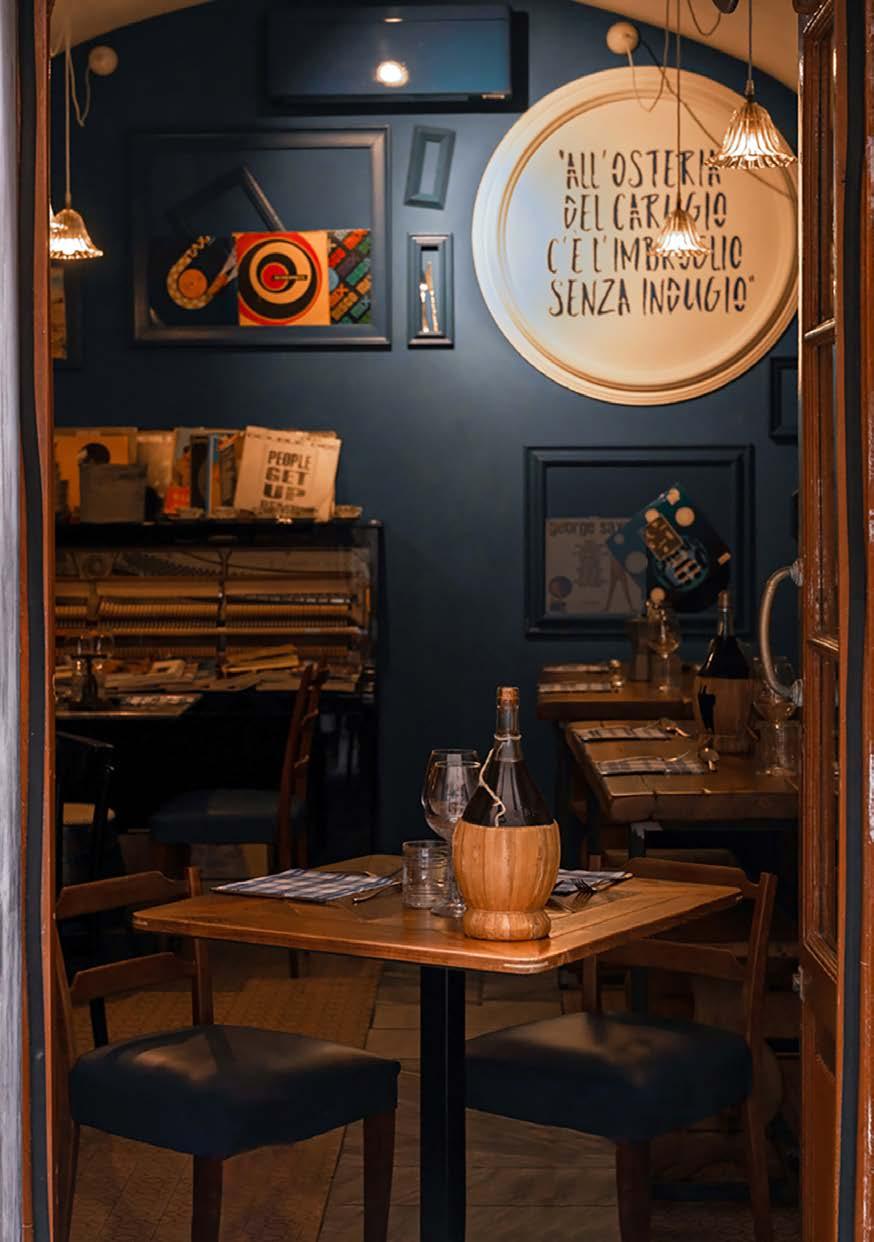LUNIGIANA STORICA HISTORICAL



“La Terra dei Cento Castelli”
“The Land of the hundred Castles”







“La Terra dei Cento Castelli”
“The Land of the hundred Castles”




BEDONIA BORGO VAL DI TARO
Passo Centocroci
Passo del Bocco
GODANO
BEDONIA ALBARETO
Passo dei Due Santi
Passo del Rastrello
Passo del Brattello
CASTIGLIONE CHIAVARESE
Passo del Bracco

SESTRI LEVANTE GENOVA VENTIMIGLIA

da MOBILE, ruota lo schermo per vedere la mappa completa
from MOBILE, rotate the screen to see the full map


BERCETO PARMA
Passo Cisa
Passo del Cirone

Passo del Lagastrello
CASTELNUOVO NE’ MONTI
Passo del Cerreto
Passo dei Carpinelli
CASTELNUOVO GARFAGNANA


GOLFO DELLA SPEZIA



Aut. Trib. SP nr. 1116/12
Iscrizione al ROC: N° 22857

Direttore Responsabile
Enzo Millepiedi
Testi di Mirco Manuguerra (Centro Lunigianese di Studi Danteschi)
Progetto Editoriale
ITALIA PER VOI s.r.l.
Sede e contatti
Via Nino Ricciardi 31 - SP italiapervoi@gmail.com
Direttore Editoriale e Servizio Amministrativo
Gino Giorgetti
Direzione commerciale
Maria Grazia Dallagiacoma Mob. +39 333.8485291
Grafica, web & Social
Sara Fornesi
Giulia Parravicini
Comunicazione social & fiere
Erika Giorgetti
Foto e immagini
Gino Giorgetti, Sara Fornesi, Erika Giorgetti, Michela Lucchetti
Altri contributi fotografici
Italia Per Voi s.r.l., Canva.com, Ilopul by Wikipedia.com
Stampa e tiratura
Tipolitografia Pagani S.r.l. 15.000 esemplari
Fortezza Firmafede, Sarzana
Forte di Castruccio, Sarzanello
Castello Palazzo Vescovile, Castelnuovo Magra
Castello Obertengo, Arcola
Monastero Santa Croce del Corvo, Ameglia
Castello Palazzo Giustiniani, Vezzano Ligure
Castello di Malnido e Malgrate, Villafranca in Lunigiana
Torre di Dante e Castello di Lusuolo, Mulazzo
Castello del Piagnaro, Pontremoli
Castelli di Bagnone e Castiglione del Terziere
Castelli Malaspina, Licciana Nardi
Castello di Comano, Comano
Castello di San Giorgio, La Spezia
Castelli di Lerici e San Terenzo
Castello Doria, Portovenere
Convento dei Cappuccini, Monterosso al Mare
Castello Fieschi, Varese Ligure
Castello Malaspina, Massa
Castello Aghinolfi, Montignoso
Tutti i diritti sono riservati. Qualsiasi riproduzione o utilizzo di copie è proibito. L’uso del nostro sito o della nostra rivista digitale è soggetto ai seguenti termini: tutti i diritti sono riservati. Nessuna parte di www.italiapervoimagazine.it può essere riprodotta, memorizzata in un sistema di recupero o trasmessa, in qualsiasi forma o con qualsiasi mezzo, elettronica, meccanica, fotocopia, registrazione o altro, senza previa autorizzazione scritta da parte di Italia per Voi s.r.l.
Firmafede Fortress, Sarzana
Castruccio's Fortress, Sarzanello
Palazzo Vescovile Castle, Castelnuovo Magra
Obertengo Castle, Arcola
Santa Croce del Corvo Monastery, Ameglia
Palazzo Giustiniani Castle, Vezzano Ligure
Dante's Tower and Lusuolo Castle, Mulazzo
Malnido and Malgrate Castles, Villafranca in Lunigiana
Piagnaro Castle, Pontremoli
Bagnone and Castiglione del Terziere Castles
Malaspina Castles, Licciana Nardi
Castle of Comano, Comano
San Giorgio Castle, La Spezia
Lerici and San Terenzo Castles
Doria Castle, Portovenere
Capuchin Friars Monastery, Monterosso al Mare

Fieschi Castle, Varese Ligure
Malaspina Castle, Massa
Aghinolfi Castle, Montignoso

Nonostante l’accurata verifica delle informazioni contenute in questo numero, Italia per Voi s.r.l. non può accettare responsabilità per errori od omissioni. Le opinioni espresse dai contributori non sono necessariamente quelle di Italia per Voi s.r.l. Salvo diversa indicazione il copyright del contributo individuale è quello dei contributori. E’ stato fatto ogni sforzo per rintracciare i titolari di copyright delle immagini, laddove non scattate dai nostro fotografi. Ci scusiamo in anticipo per eventuali omissioni e saremo lieti di inserire l’eventuale specifica in ogni pubblicazione successiva. Abbonamento postale su richiesta.

unigiana” è un toponimo la cui origine deriva da Luni, città romana fondata nel 177 a.C. alla foce del fiume Magra, la quale ha conferito una connotazione indelebile all’intero comprensorio. Trattiamo di una realtà geografico-culturale oggi troppo spesso identificata nella sola Alta Valle della Magra, ma sussiste ovunque, nella regione, il sentore di quel dominio assai più ampio indicato comunemente dagli studiosi con il sintagma di Lunigiana Storica.
Indichiamo, dunque, tale realtà secondo la migliore tradizione degli studi: essa vede estendere i propri confini alle attuali provincie amministrative della Spezia e di Massa Carrara con alcuni sconfinamenti nella provincia di Parma (per esempio Berceto e Albareto) e in quella di Lucca (la Versilia fino a Pietrasanta e l’Alta Garfagnanadella zona di Gramolazzo).
Si tratta precisamente di quel territorio definito dalla grande cultura preistorica delle Statue-stele, fenomeno di megalitismo antropomorfo ampiamente riconosciuto come il più importante d’Europa e uno dei maggiori al mondo. Così questa guida alla Lunigiana, la terza della serie creata da Italia per Voi, dopo i successi di «Lunigiana Dantesca» del 2021 e «Lunigiana Monumentale» del 2022, vuole essere un omaggio giusto alla Storia di questa regione straordinaria e ancora troppo poco conosciuta.
Ovviamente, in poche pagine non si può far altro che riassumere, per sommi capi, una materia veramente enciclopedica: le radici della regione si perdono addirittura nell’immenso Paleolitico Inferiore, con la frequentazione documentata della sottospecie del Neanderthal nella Tecchia di Equi Terme, splendida località termale posta sotto le gigantesche torri settentrionali delle Alpi Apuane. Poi, dopo i fasti dell’età romana, è in epoca bizantina, con l’Esarcato di Ravenna e l’Impero d’Oriente impegnato a mantenere integra almeno una parte d’Italia dalle invasioni barbariche, che Luni conobbe un nuovo vertice: la Lunigiana è in quei secoli unita all’Emilia-Romagna, della quale si offriva come sbocco strategico sul Tirreno.
In quel tempo la flotta imperiale fu dislocata in Sardegna e Luni divenne Capitale della Provincia Maritima Italorum. Di quella gloria resta il retaggio del Comando in Capo del Dipartimento Militare Marittimo dell’Alto Tirreno costituito presso la sede dell’Ammiragliato alla Spezia.
Nella successiva epoca longobarda si guardò precisamente alla Lunigiana come Tusciam ingressus (‘Porta di Toscana’) e con lo stesso appellativo la considerò l’imperatore Federico II di Svevia, lo Stupor mundi. Non a caso, dunque, fra quei due regni si era già costituita quella grande strada europea – oggi celebrata e valorizzata come Via Francigena – di cui il tratto lunigianese costituisce uno dei più interessanti. Via Francigena, dunque, “Strada d’Europa”. Ebbene, di “Europa” parlò per la prima volta il nostro grande padre Dante proprio nel Canto VIII del Purgatorio, il Canto lunigianese per eccellenza: il Sommo Poeta, nello stendere un elogio assoluto, insuperabile, immortale al Malaspina, diede loro atto di godere di una fama continentale per la cortesia da sempre

dimostrata verso i poeti esuli.
Oggi la Lunigiana è definita in vari modi: la Terra dei 100 Castelli, ma anche la Regione a cui nulla manca (M. Manuguerra, 2002), tutti appellativi tesi a sottolineare le eterogenee e vastissime ricchezze storiche, culturali e naturalistiche di un territorio che, raccolto in una superficie relativamente modesta, costituisce un vero unicumplanetario. Basti dire che qui abbiamo due Parchi Nazionali (Appennino Tosco-Emiliano e Cinque Terre), due Parchi Regionali (Alpi Apuane e Portovenere-Isole del Golfo della Spezia), un Parco Fluviale (della Magra e del Vara) e due Riserve Marine (Cinque Terre e Portovenere-Isole del Golfo della Spezia).
In Lunigiana, nel raggio di poche decine di chilometri in linea d’aria, si contano piste da sci e strade ferrate; spiagge d’ogni genere e boschi sacri; un parco marino caratterizzato da uno splendido arcipelago e spiagge d’ogni tipo, il tutto associato ad un comodissimo entroterra ricco di laghi, fiumi, campagne e colline.
Abbiamo la fortuna, noi Lunigianesi, di vivere in una realtà davvero mirabile. Ma questa Regione baciata dal Fato ha comunque un grande obbligo: quello di mantenere intatte le attuali dimensioni “a misura d’uomo”. Né andrà mai dimenticato che Turismo significa economia etica, cioè foriera di quello spirito di Pace e di Fratellanza universale che fu al centro di ogni speculazione nell’opera di Dante Alighieri, il più illustre dei suoi visitatori. Che il Veltro sia sempre con noi.
di / by Mirco Manuguerra


unigiana” is a toponym coming from Luni, a Roman city founded in 77 BC at river Magra’s mouth which gave a permanent connotation to the whole area. This geographical and cultural reality is too often merely identified with the upper Valley of Magra, when in fact it permeates a much larger area, commonly referred to by experts as Lunigiana Storica (“Historical Lunigiana”) and its influence can be felt throughout the whole region.
In keeping with the best tradition of studies, we will consider this reality as inclusive of the administrative provinces of Spezia and Massa-Carrara, with the exception of some territories within the provinces of Parma (e.g. Berceto and Albareto) and Lucca (the Versilia territory that includes Pietrasanta and the Upper Garfagnana of the Gramolazzo area).
The origins of Lunigiana’s historical territory are directly connected to the great prehistoric tradition of Statues menhir, megalithic anthropomorphic statues that have been widely recognized as the most important representation of the megalithic culture in Europe and, as a consequence, one of the most relevant examples worldwide. The ensemble of monuments, counting about a hundred pieces, has a very distinctive feature: the number of the male menhirs (carrying a Celtic dagger) is almost the same as that of the female ones (wearing noticeable necklaces), clearly indicating an equalised society.
The region has its deepest roots in the incredibly extensive period of the Lower Paleolithic, which, as confirmed by documented

evidence, saw the presence of the Neanderthal subspecies in the Tecchia di Equi, a wonderful thermal location situated under the Apuan Alps’ northern towers.
Following the splendour of the Roman age, Luni reached a new peak during the Byzantine era, while the Exarchate of Ravenna and the Eastern Empire were trying to defend at least some of Italy’s territory from barbarian invasions: during these centuries Lunigiana was merged with Emilia-Romagna and provided a strategic access to the Tyrrhenian Sea. The imperial fleet was deployed in Sardinia and Luni became the Capital of the Provincia Maritima Italorum. What remains of that ancient glory is the legacy of the Headquarters in Chief of the Marine Military Department of Alto Tirreno, in the headquarters of the Ammiragliato (“Admiralty”) of La Spezia.
During the following Longobard era, Lunigiana was specifically seen as Tusciam ingressus (“Door into Tuscany”) by Frederick II of Svevia, the Stupor mundi (“Wonder of the world”). It is no coincidence that a great European road - which today we rightly celebrate and value as the Via Francigena - had already been built between those two reigns.
The part of the Francigena that crosses Lunigiana is one of its most interesting sections.
The Via Francigena has been defined as a great European road. The first person to ever mention the word “Europa” was our great father Dante and this event occurred exactly in the Lunigiana territory: in Canto VIII of Purgatorio (“Purgatory”), the Canto of Lunigiana par excellence, the Supreme Poet gave credit to the Malaspina family for reaching continental fame, stating that they were always welcoming towards exile poets.
Today Lunigiana is referred to with various names: “Terra dei 100 Castelli” (“Land of the 100 Castles”) is one of them, but also Regione a cui nulla manca (“Region that lacks for nothing”, M. Manuguerra, 2002). These expressions emphasize the disparate and immense historical, cultural, natural prosperity of this territory, which is a truly unique place worldwide, despite covering a relatively limited area. Suffice it to say that it hosts two National Parks (the Tuscan-Emilian Apennine and the Cinque Terre, “Five Lands”), two Regional Parks (Apuan Alps and Porto Venere-Islands of the Gulf of La Spezia), a Parco Fluviale (the Magra and Vara’s river park) and two Marine Reserves (Cinque Terre and Portovenere-Islands of the Gulf of La Spezia).
In Lunigiana, within a few tens of kilometres beeline, you can encounter ski slopes and railway tracks; all kinds of beaches and sacred woods; a sea with a beautiful archipelago and beaches of all types, all of this combined with a generous hinterland that abounds in lakes, rivers, rural areas and hills.
Lunigiana’s locals are lucky to live in an exceptionally impressive territory. But this Region, which was blessed by Fate, has to safeguard its “human scale” dimensions. We must never forget that Tourism means ethical economy, which leads to Peace and universal Brotherhood. These same values were a topic of great interest in the work of Dante Alighieri, who remains the most eminent visitor of this region.
Let’s hope that the Veltro (“Greyhound”) always guides us.
La Lunigiana è una terra costituita da cinque piccoli comprensori conosciuti ormai in tutto il mondo:
Le Cinque Terre
(Riomaggiore, Manarola, Cormniglia, Vernazza e Monterosso al Mare) rappresentano quello straordinario lembo di costa sul quale Montale, con l’immortalità dei suoi Ossi di Seppia, edificò il suo Premio Nobel. Oggi elevato a Parco Nazionale (comprensivo anche della relativa Riserva Marina), deve parte della propria fama internazionale anche allo splendido Presepe luminoso di Manarola, creato nel 1961 da Mario Andreoli.
Il Golfo dei Poeti
è rappresentato dallo splendido Golfo di Lerici e, per estensione, dell’intero Golfo della Spezia. È impreziosito dal suo fantastico arcipelago di isole minori (Isole della Palmaria, del Tino, del Tinetto). L’appellativo lo si deve a Sem Benelli, che lo inserì nel titolo di un suo poemetto del 1916 (“Notte sul Golfo dei Poeti”) dedicato alle Orme qui lasciate da personalità come Dante stesso (Pur III 49-51), Shelley, Byron e altri. A tali referenze si sono aggiunte in seguito quelle di D. H. Lawrence, Mario Soldati, Giovanni Giudici.
La Val di Magra
è la culla di quella straordinaria cultura megalitica degli antichi Liguri-Apuani di cui resta ampia testimonianza nel Museo delle Statue-stele di Pontremoli e nel Museo Civico della Spezia. Il comprensorio comprende anche i luoghi posti sui contrafforti dell’Appennino Tosco-Emiliano a Est e dell’Appennino Ligure a Ovest.
La Val di Vara
ha ricevuto la certificazione di Valle del Biologico: ad oggi è la regione a minor impatto antropico d’Europa, di gran lunga più verde della Foresta Nera in Germania. Per questa referenza essa è oggetto di costanti studi internazionali. Paradiso dei cercatori di minerali, vi sono state scoperte varietà rarissime e addirittura uniche. E l’Alta Via dei Monti Liguri è un itinerario di importanza straordinaria: la Via Herculea è segnalata ancora da Strabone come strada già antichissima per i suoi tempi, che dall’Etruria andava fin nella penisola Iberica.
Le Alpi Apuane
sono il regno di quella celebre varietà di marmo bianco che ha regalato al mondo, con Michelangelo e il Canova, monumenti tra i più grandi della Storia dell’Arte di tutti i tempi. Cantate da Dante, sono oggetto di attenzione, come Le Cinque Terre, di un turismo mondiale.
Lunigiana is divided into five world renowned smaller areas:
The Cinque Terre (Riomaggiore, Manarola, Cormniglia, Vernazza e Monterosso al Mare) cover an incredible stretch of coast, which was also featured in Montale’s immortal work Cuttlefish Bones, the masterpiece that paved the way to his Nobel Prize award. This territory has been elevated to the status of National Park (including the Marine Reserve) and it partially owes its international fame to the beauty of the luminous Nativity Scene of Manarola, created by Mario Andreoli in 1961.
The Gulf of Poets includes the magnificent Gulf of Lerici and, by extension, the entire Gulf of La Spezia. Its marvellous archipelago of smaller islands (Palmaria,Tino and Tinetto) further embellishes this territory. The name was first used by Sem Benelli in the title of one of his short poems from 1916 (Notte sul Golfo dei Poeti, “Night in the Gulf of Poets”), which he dedicated to the Footprint left behind by personalities such as Dante himself (Pur III 49-51), Shelley, Byron and others. Later, the list of personalities included also D. H. Lawrence, Mario Soldati, Giovanni Giudici.
The Valley of Magra is the cradle of the wonderful megalithic tradition of the ancient Ligurian Apuans. Today, this culture survives in the Museum of the Statue Stele in Pontremoli as well as in the Museo Civico (“Civic Museum”) in La Spezia. The territory also includes the areas on the Tuscan-Emilian Apennine’s eastern spurs and on the Ligurian Apennine’s western spurs.
The Valley of Vara
has been officially recognized as Valle del Biologico (“Organic Valley”): as of today, it is the region in Europe where the human footprint is at a minimum; it is far greener than Germany’s Black Forest. For this very reason, it is the subject of continuous international research. It is a heaven for mineral prospectors: extremely rare, if not unique, varieties have been discovered here. The Alta Via dei Monti Liguri (“High Route of the Ligurian Mountains”) is an itinerary of extraordinary importance: the Via Herculea was even mentioned by Strabo as that very ancient road that connected Etruria to the Iberian Peninsula.
The Apuan Alps
are the kingdom of the renowned variety of white marble that the world can still admire in the works of Michelangelo and Canova, authors of some of the greatest monuments of all time in the history of art. Just like the Cinque Terre, the Apuan Alps, which Dante wrote about, attract international tourism.
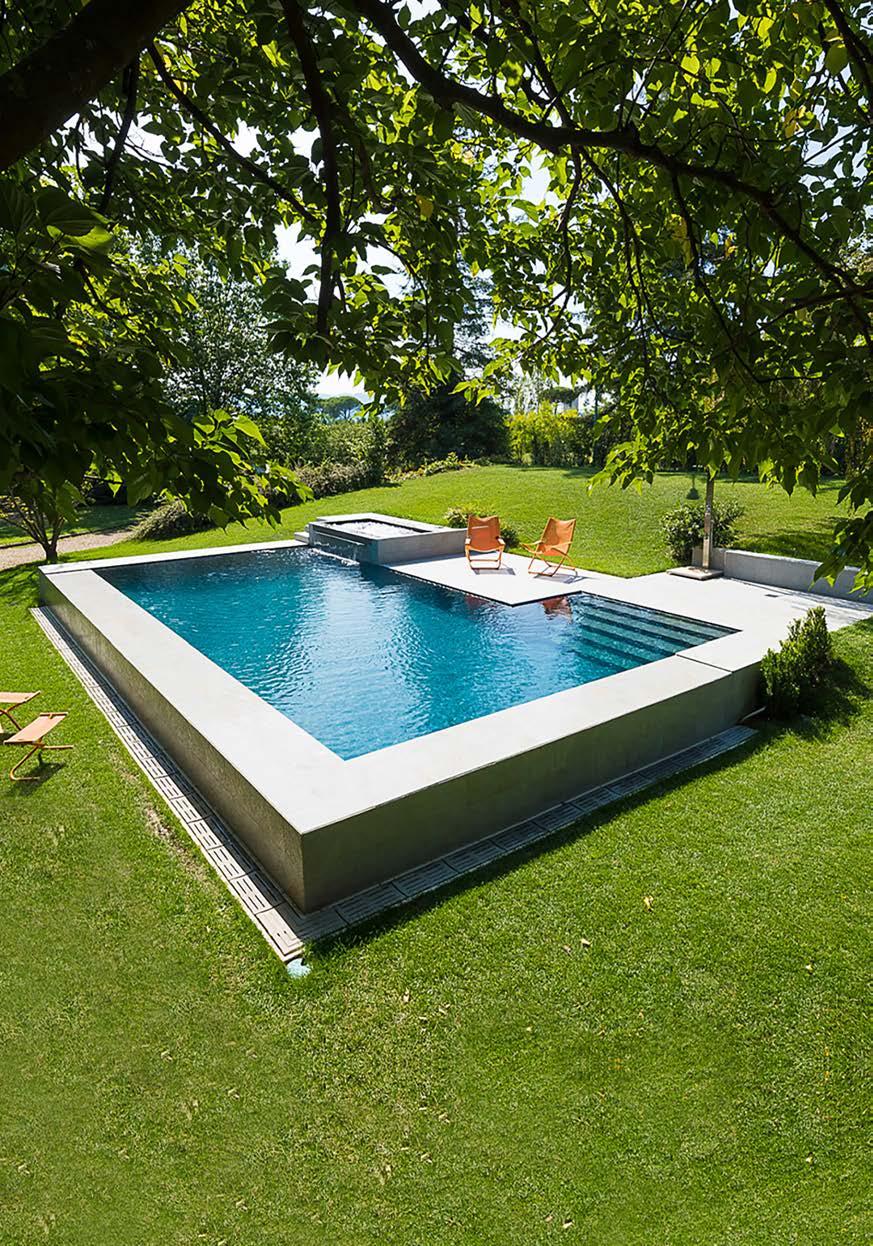


n epoca dantesca la città era già ben conosciuta anche in Firenze, se è vero che il grande padre Dante, priore nel 1300, vi dispose il confino del grande amico Guido Cavalcanti.
Doveva trattarsi di un semplice soggiorno al mare con tanto di famiglia al seguito, in attesa che in patria le acque finalmente si placassero, ma chi avrebbe mai immaginato che quell’anima irrequieta si sarebbe avventurata nella malsana piana

n Dante's time, the town was already well known in Florence, as attested by the fact that Dante himself, who was a prior in 1300, arranged the confinement of his great friend Guido Cavalcanti right there. It should have been a mere stay near the sea in the company of his family, while waiting for the storm to calm down in his hometown. Who would have ever imagined that this restless soul would die from malaria after venturing into the unhealthy plain of Luni? There are clear records con-


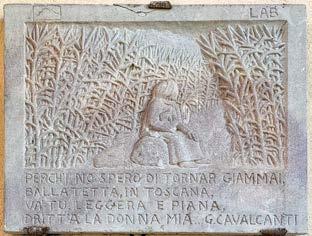
di Luni contraendovi la malaria e andando all'altro mondo? Della Sarzana del tempo restano memorie sicure, ma Dante - che nel 1306 qui curò la celebre Pace di Castelnuovo - non vide mai l’attuale cerchia muraria e la Fortezza di Firmafede, perché, seppur costruite su strutture pisane del XIII secolo, quelle che oggi si ammirano sono opere medicee personalmente commissionate dal grande Lorenzo il Magnifico. Vittorioso sull’arroganza genovese nella Guerra di

nected to Sarzana of that period, but Dante - who here handled the famous Peace of Castelnuovo in 1306- never saw the current ring of walls and the Firmafede Fortress, because, although they were built on Pisan structures from the 13th century, those that can be admired today were built under the Medici family and were personally commissioned by the great Lorenzo the Magnificent. Having defeated the arrogant Genoese in the Serrazzana War,


Il Panìgo, panigacceria polenteria, propone una vasta scelta di ottime specialità liguri preparate con ingredienti tipici del luogo, specialità di carne e panigacci. Durante il periodo estivo, aperto tutte le sere a cena, tranne il martedì.

Panìgo, a panigacceria and polenteria, offers a wide choice of excellent Ligurian specialities prepared with local ingredients, meat specialities and panigacci. During the summer it is open in the evening. Closed on Tuesdays.
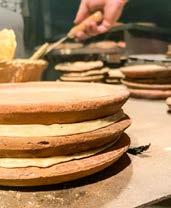



Serrazzana, Lorenzo incaricò la blindatura della città all’architetto Francesco di Giovanni detto “il Francione”, artefice anche del rifacimento generale della Fortezza di Sarzanello. Con la morte prematura del Magnifico, avvenuta nell’anno della scoperta dell’America, il 1492, la Signoria fiorentina decise di abbandonare la zona lasciando Sarzana ai genovesi: i Medici la vendettero al potentissimo (e ricchissimo) Banco di San Giorgio. Come la Fortezza di Sarzanello anche la Firmafede è aperta al pubblico tutto l’anno, sede di decine di eventi culturali seguitissimi.
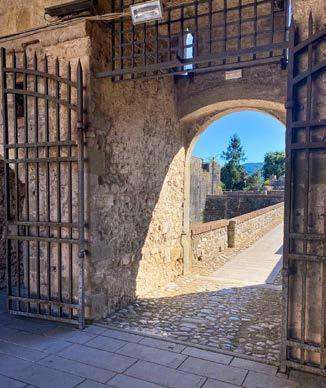

Lorenzo commissioned the fortification of the town to the architect Francesco di Giovanni, known as “il Francione”; he was also the architect of the overall reconstruction of the Fortress of Sarzanello. After the premature death of Lorenzo the Magnificent, in 1492, the year of the discovery of America, the Florentine Lordship decided to abandon the area, leaving Sarzana to the Genoese: the Medici family sold it to the extremely powerful and wealthy Bank of Saint George. Like the Fortress of Sarzanello, the Firmafede Fortress is open to the public all year round, hosting dozens of highly popular cultural events.



A traditional restaurant with large halls and outdoor spaces, it offers simple dishes, especially land specialities: tagliatelle with meat sauce, ravioli, tagliolini with pesto, grilled meat, rabbit, chickpea and olive salad, cutlets and much more. Large parking space.
Locale tradizionale con grandi sale e dehors, propone piatti semplici, soprattutto di terra: tagliatelle al ragù, ravioli, tagliolini al pesto, carne alla griglia, coniglio, insalata di ceci e olive, cotolette e molto altro. Ampio parcheggio.

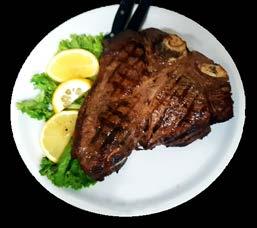

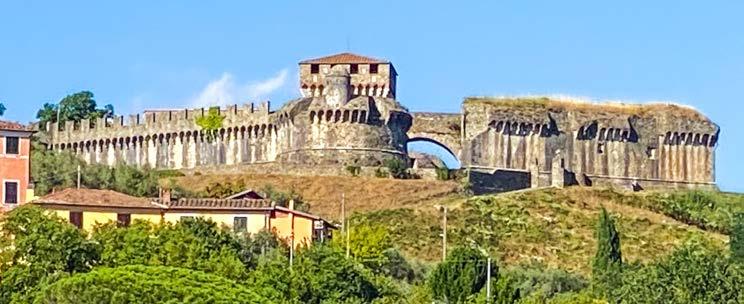
imperatore Ottone I, in un suo diploma del 963, riconosceva ad Adalberto, vescovo di Luni, il possesso di una fortificazione sul castrum Sarzanae. Di quale luogo si tratti lo attesta il Registrum Vetus, cioè la più antica raccolta di documenti del comune di Sarzana, che in un foglio datato 1448 rivela che il «castrum Sarzane “[…] nunc dicitur Sarzanellum […]», cioè ‘è chiamato oggi Sarzanello’. Quella che vien comunemente detta la “fortezza di Castruccio” è dunque in realtà una costruzione molto più antica. Castruccio Castracani degli Antelminelli, la bestia nera di Spinetta Malaspina il Grande, abitò
mperor Otto I, in his discharge papers from 963, bestowed a fortification on the castrum Sarzanae on Adalbert, bishop of Luni. This is attested by the Registrum Vetus, the oldest collection of documents of the municipality of Sarzana. In a document dated 1448 it reveals that the «castrum Sarzane [...] nunc dicitur Sarzanellum [...]», meaning “today it’s called Sarzanello”. What is commonly called “Castruccio’s fortress” is therefore a much older construction. Castruccio Castracani degli Antelminelli, who was the archenemy of Spinetta Malaspina the Great, lived in the castle between 1317 and 1328, when he suddenly died. He certainly made
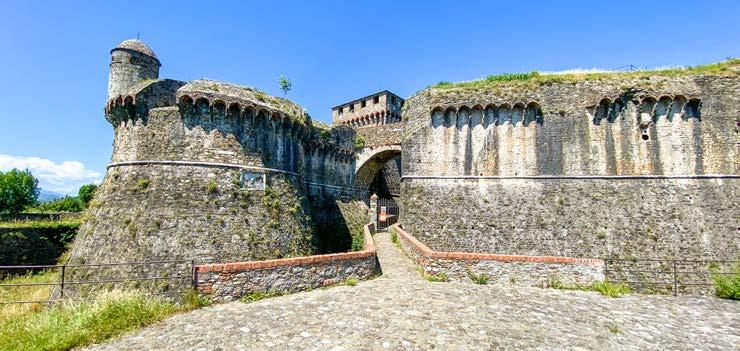
il castello tra il 1317 e il 1328, quando poi venne improvvisamente a morte. Sicuramente operò delle modifiche all’impianto originario del bastione, ma l’attuale configurazione è tutta Rinascimentale, il cui progetto si deve a Lorenzo il Magnifico. Uscito vittorioso dalla Guerra di Serezzana sulla Repubblica di Genova, che si era appropriata della piccola Firenze in Val di Magra, il De’ Medici affidò il progetto di blindatura della città all’architetto Francesco di Giovanni, detto “il Francione”, il quale provvide per prima cosa alla sistemazione delle mura e della Fortezza Firmafede, posta nel cuore del centro storico, per poi aprire il cantiere di Sarzanello. Con la morte prematura del Magnifico, avvenuta nell’anno della scoperta dell’America, il 1492, la Signoria fiorentina decise, pochi anni dopo, di lasciare Sarzana ai genovesi vendendola al potentissimo (e ricchissimo) Banco di San Giorgio.
La Fortezza di Sarzanello è aperta al pubblico tutto l’anno, sede di visite guidate e fascinosi eventi di rievocazione storica.

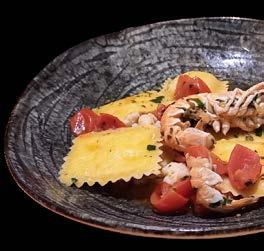
changes to the original plant of the bastion, but the current configuration entirely belongs to the Renaissance and is due to Lorenzo the Magnificent’s project.
After his victory, in the War of Serezzana, against the Republic of Genoa, which had occupied the small Florence in Val di Magra, De’ Medici entrusted the fortification of the town to the architect Francesco di Giovanni, known as “il Francione”, who first took care of the construction of the walls and of the Firmafede Fortress, located in the heart of the historic centre, and then set in motion the construction site for the Sarzanello fortress. A few years after the premature death of Lorenzo the Magnificent, which occurred in 1492, the year of the discovery of America, the Florentine Lordship decided to abandon Sarzana, leaving the town to the Genoese and selling it to the extremely powerful and wealthy Bank of Saint George. The Fortress of Sarzanello is open to the public all year round, home to guided tours and fascinating historical reenactments.
Vi accoglieremo in un ambiente famigliare e ben curato. Disponiamo anche di un Dehors per chi preferisce stare all’aperto. Una cucina di tradizione famigliare che rievoca sapori antichi, lo Staff vi consiglierà sulla scelta del menù dall’antipasto al dolce.
Da Martina welcomes you into a familiar and well-tended environment. There is also an Outdoor space. A traditional family cuisine that evokes ancient flavors. The Staff will guide you in your choice from appetizer to dessert.
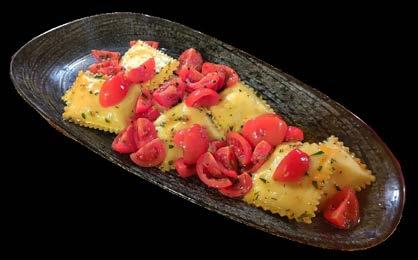


a splendida mole del Castello Vescovile, fermamente voluto dal vescovo guerriero Enrico da Fucecchio – grande riformatore dell’organizzazione diocesana e committente del famosissimo Codice Pelavicino che si conserva presso la Biblioteca del Seminario Vescovile in Sarzana – fu sede della storica intesa raggiunta tra Dante Alighieri, rappresentante dei Malaspina, e l’ultimo dei vescovi-conte, Antonio Nuvolone da Camilla. L’incontro risolutore avvenne la mattina del 6 ottobre del 1306, presenti testimoni, giureconsulti e il notaro Ser Giovanni di Parente di Stupio, lo stesso che redasse poche ore prima a Sarzana la procura in bianco rilasciata all'Alighieri dal marchese di Mulazzo, Franceschino Malaspina. Non si trattò di una mera formalità, ma di una lunga e laboriosa opera di mediazione diplomatica che trovava quel giorno il sospirato perfezionamento.
Infatti, l'arrivo di Dante in Lunigiana si dimostra avvenuto entro il 12 di aprile di quello stesso anno (Galanti, 1965), dunque il Sommo Poeta era già in Val di Magra sei mesi prima della Pace. Le vestigia del Pa-
he magnificent Castello Vescovile (Bishop’s Castle), which was firmly desired by the warrior bishop Enrico da Fucecchio – great reformer of the diocesan organisation and the man responsible for the famous Pelavicino Code that is kept in the Library of the Bishop's Seminary in Sarzana – was the site of the historic agreement signed by Dante Alighieri, representative of the Malaspina, and the last of the count-bishops, Antonio Nuvolone da Camilla. The decisive meeting took place on the morning of October 6th, 1306, in the presence of witnesses, jurors and the notary Ser Giovanni di Parente di Stupio, who, a few hours earlier, in Sarzana, had drafted the power of attorney entrusted to Dante Alighieri by the Marquis of Mulazzo, Franceschino Malaspina. It was not a mere formality, but a long and laborious work of diplomatic mediation that was brought to completion on that very day. Dante's arrival in Lunigiana took actually place before April 12th of that same year (Galanti, 1965), so the Supreme Poet had already been in Val di Magra six months prior to the Peace. The vestiges of
lazzo dei Vescovi continuano a narrare al mondo quegli eventi straordinari da cui Dante trasse la sua filosofia di pace universale. Si tratta di una delle maggiori costruzioni teoriche nel campo delle scienze umanistiche di ogni tempo. La 'Pax Dantis' la si è recentemente scoperta nell'allegoria generale del Canto VIII del Purgatorio (Manuguerra, 2003) ma fu compiutamente definita dal genio fiorentino nel trattato maturo della Monarchia.

the Bishops’ Palace are still evidence of those extraordinary events that inspired Dante’s own philosophy of universal peace. It is one of the greatest theoretical concepts of all time in the field of humanities. In recent times, an exemplification of the 'Pax Dantis' was identified with the general allegory of Canto VIII of Purgatorio (Manuguerra, 2003). However, the concept was fully defined by the Florentine genius in his wise treatise Monarchia.

Taberna è un ristorante steakhouse collocato in un’ubicazione storica immersa nella natura delle Colline del sole, a cavallo tra la Toscana e la Liguria. Un locale dall’atmosfera intima e accogliente, con una selezione di carni frollate di eccellenza, dai sapori più delicati a quelle dai profumi e le gustosità più intense.





Taberna is a steakhouse restaurant located in a historic location immersed in the nature of the Hills of the Sun, between Tuscany and Liguria. A place with an intimate and welcoming atmosphere, with a selection of excellent aged meats, from the most delicate flavors to those with the most intense aromas and flavours.
Via degli Ulivi, 1 - Colline del Sole Castelnuovo Magra (SP)
Tel. +39 0187 1755339
email: info@ippotur.it




a storia del Castello di Arcola è alla base di una delle più affascinanti saghe del medioevo europeo. Nel 1278 Moroello I Malaspina, marchese di Mulazzo, figlio di quel Corrado detto da Dante «l’Antico» in Pur VIII 119, decise di allearsi, lui ghibellino, con i guelfi genovesi rappresentati dai Fieschi, una famiglia potentissima che aveva già dato alla storia due papi. Bastò una incursione nel chiavarese per scatenare la reazione di Oberto Doria, il quale mosse subito all’assedio di Arcola. Finì da lì a poco con i Malaspina che vendettero Arcola al potente ghibellino genovese. Non solo, dunque, Arcola, confinante con i possedimenti del vescovo di Luni, rimase in mano ghibellina, ma i Malaspina incassarono parecchi denari e il rampollo di famiglia, Moroello II di Giovagallo (il futuro «vapor di Val di Magra» di Inf XXIV 145)», prese in moglie Alagia dei Fieschi, figlia del conte palatino Niccolò. Da quel matrimonio i Malaspina risolsero il problema della presenza di un vescovo di Luni che dal 1183, con la Pace
he history of the Castle of Arcola is the basis of one of the most fascinating sagas of the European Middle Ages. In 1278, Moroello I Malaspina, a Ghibelline, marquis of Mulazzo and son of that Conrad who was called by Dante «the Ancient» in Pur VIII 119, decided to ally himself with the Genoese Guelphs represented by the Fieschi, a very powerful family that had already produced two popes. A raid in the area of Chiavari was enough to trigger the reaction of Oberto Doria, who immediately counterattacked with the siege of Arcola. Soon after that, the Malaspina sold Arcola to the powerful Genoese Ghibelline. Not only did Arcola, which was adjacent to the possessions of the bishop of Luni, remain under the Ghibellines’ control, but also the Malaspinas earned a good sum of money and the descendant of the family, Moroello II of Giovagallo (the future «vapour from Val di Magra» in Inf XXIV 145), married Alagia dei Fieschi, daughter of the Palatine count Niccolò. With this marriage, the Malaspina solved the issue of
di Costanza siglata da Federico il Barbarossa, aveva acquisito anche il titolo di conte. Accadde precisamente, agli albori del 1300, che l’ultimo vescovo guerriero, il temibile Enrico da Fucecchio, si ritirò d’un tratto a vita privata e al suo posto arrivò – guarda caso – Antonio Nuvolone da Camilla, niente meno che il cugino di primo grado di Alagia Fieschi, l’uomo con cui Dante, il 6 di ottobre del 1306, avrebbe concluso la famosa Pace di Castelnuovo. Quando poi il da Camilla venne a morte, ormai già vecchio e stanco nella primavera del 1307, al suo posto fu eletto il primo dei vescovi malaspiniani, Gherardino. Costui si rifiutò di dare il contingente al nuovo imperatore Arrigo VII sceso in Italia a cavallo tra il 1310 e il 1311, e si vide perciò privato del titolo nobiliare. La domanda è: ma Gherardino

the bishop of Luni who in 1183, with the Peace of Constance signed by Frederick Barbarossa, had also acquired the title of count. Precisely at the dawn of the 1300s, the last warrior bishop, the fearsome Enrico da Fucecchio, suddenly withdrew to private life and was – guess what – replaced by Antonio Nuvolone da Camilla, none other than Alagia Fieschi’s first cousin, the man who, on October 6th 1306, finalised the famous Peace of Castelnuovo with Dante. With the death of Da Camilla, who in the spring of 1307 was already old and tired, the first of the Malaspinian bishops, Gherardino, was elected in his place. He refused to give the contingent to the new emperor Arrigo VII, who arrived to Italy by horse between 1310 and 1311, and was therefore deprived of the noble title. The

Arcola sorge nella bassa Val di Magra, in una posizione dominante. Nel paese svetta l’antica Torre pentagonale Obertenga. Sulle colline arcolane, ricche di sentieri percorribili, si trovano borghi storici come Trebiano, Baccano, Cerri, Monti e Fresonara. E’ zona di produzione del vermentino doc. La zona fluviale fa parte del Parco di Montemarcello Magra – Vara.


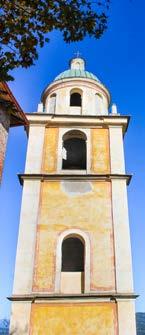
Arcola rises in the lower Val di Magra and overlooks the valley. The ancient pentagonal Torre Obertenga towers over the town. On the hills of Arcola, which abounds with walkable paths, there are historic villages such as Trebiano, Baccano, Cerri, Monti and Fresonara. Here is where the Vermentino Doc is produced. The river area is part of the Montemarcello Magra Vara Park.

ci era o ci faceva? Probabilmente, mentre Moroello di Giovagallo smetteva di fare la parte del Guelfo Nero e fu a Milano, con Dante, ad accogliere Arrigo VII. Guglielmo, che era un Malaspina, doveva continuare a fingere ancora un po’…
Quella dei Malaspina è una storia dalla grandezza infinita che fruttò loro addirittura l’Elogio assoluto di Dante in conclusione del Canto VIII del Purgatorio. Un capolavoro di diplomazia che proprio qui trovò le prime mosse, nel castello di Arcola: un presidio sacrificato alla maniera con cui un grande scacchista rinuncia ad un pezzo importante per poi trascinare l’avversario alla sconfitta inevitabile. Nel territorio di Arcola è presente anche il Castello di Trebbiano, celebre per una leggenda popolare che vuole che in esso sia nascosto l’autografo della Divina
Commedia. Nella Chiesa dedicata a S. Michele Arcangelo, il Trittico di Domenico Gar (“Trionfo di San Michele in Terra e in Cielo”) è un degno capolavoro del tempo di Raffaello e Michelangelo.
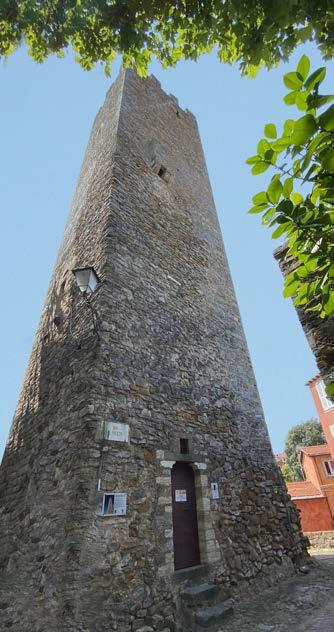

question is: was Gherardino stupid or just pretending to be stupid? Moroello di Giovagallo stopped playing the role of the black guelph and in Milan, together with Dante, he welcomed Arrigo VII. Guglielmo, on the other hand, had to keep pretending a little longer... The story of the Malaspina is the story of an infinite grandeur, which even led to Dante’s Absolute Praise at the end of Canto VIII of Purgatorio. A masterpiece of diplomacy that took its first steps right here, in the castle of Arcola: a garrison that was sacrificed in the same way a great chess player gives up an important piece and then drags the opponent towards the inevitable defeat. In the Arcola area there is also the Castle of Trebbiano, famous for a popular legend according to which the authentic copy of the Divine Comedy is hidden in it. In the Church dedicated to St. Michael the Archangel, the Triptych by Domenico Gar (“Triumph of St. Michael on Earth and in Heaven”) is a masterpiece worthy of the era of Raphael and Michelangelo.
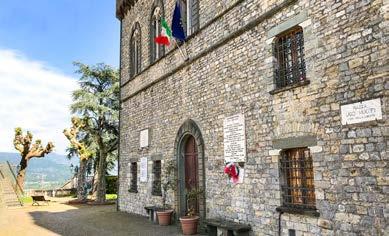


i dice “Ameglia” e si pensa subito – con il grande Ennio Silvestri –all’idea fascinosa del Portus Lunae pre-romano suggerita dalla necropoli ligure-apuana del IV sec. a.C. che proprio lui – studioso indipendente e poi sindaco del luogo – aveva scoperto sulla riva destra della Magra. Ma la grande referenza di questo borgo antichissimo è senza dubbio il Monastero di Santa Croce del Corvo, di poco sopra Bocca di Magra, la cui fondazione è attestata al 1176. Punto panoramico di straordinaria efficacia sull’estuario del fiume e sulla grande catena delle Apuane, la presenza del cenobio è strettamente legata alla Leggenda Leboinica del Volto Santo. Si tratta di un grande Cristo trionfante che antichi codici vogliono sia giunto su una navicella priva di equipaggio proprio di fronte all’antica città di Luni. La leggenda narra che il santo naviglio approdò spontaneamente a riva solo dopo l’esortazione solenne mossa

hen we say “Ameglia”, we immediately think – thanks to the great Ennio Silvestri – of the fascinating pre-Roman Portus Lunae which now survives through the Ligurian-Apuan necropolis of the 4th century BC, which was discovered by Silvestri himself – an independent scholar and, later, mayor of the town – on the right bank of the Magra. But the great landmark of this ancient village is undoubtedly the Santa Croce del Corvo Monastery, just above Bocca di Magra, which was founded in 1176. A panoramic place of extraordinary strength looking on the estuary of the river and on the great Apuan chain, the monastery is closely linked to the Leboinic Legend of the Holy Face. It’s a remarkable Triumphant Christ which, according to ancient codices, is said to have arrived on an unmanned ship right in front of the ancient town of Luni. Legend has it that the holy ship landed spontaneously ashore only after a solemn plea was expressed by Giovanni, bishop of Lucca, who came to the place after a premonitory dream of the


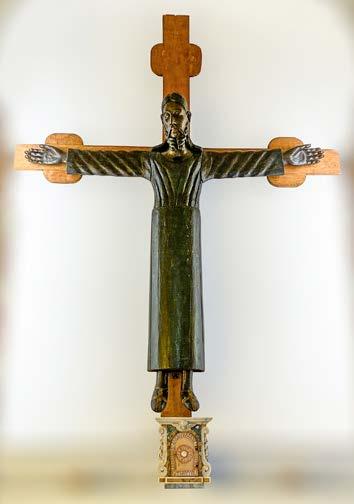
da Giovanni, vescovo di Lucca, accorso sul luogo dopo essere stato avvisato in sogno dell’arrivo miracoloso.
Seguì una disputa tra la popolazione lunense e la delegazione lucchese, con quest’ultima che pretendeva la custodia dell'opera preziosa in forza della rivelazione ricevuta dal proprio vescovo e con la popolazione lunense che ne rivendicava la proprietà per diritto territoriale. La questione si decise ponendo il Crocifisso su un carro lasciato al libero traino di due buoi non addomesticati: i buoi presero la strada per Lucca, ma la diocesi del Ducato, onde ricompensare i lunensi, lasciò loro l’ampolla rinvenuta sulla navicella del Preziosissimo Sangue di Gesù, ancor oggi conservata nella Cattedrale di Sarzana.
Di tutta questo racconto straordinario è particolarmente significativa la data cui si fa riferimento, il 742. Si tratta, infatti, dell’anno della definitiva annessione di Luni al ducato longobardo di Lucca (A. MURATORI, Delle antichità estensi et italiane, I, Napoli, MDCCCLXI, p. 181), espressione di un regno ormai del tutto cristianizzato, ma anche dell’anno di nascita di Carlo Magno, il grande artefice della restaurazione di un Impero Romano che si faceva anche Sacro.
miraculous event. A dispute ensued between the people of Luni and the delegation from Lucca, with the latter requesting the preservation of the precious relic by virtue of the revelation had by their own bishop, while the people of Luni claimed ownership by virtue of territorial law. The issue was resolved by placing the Crucifix on a cart carried by two undomesticated oxen: the oxen took the road to Lucca, but the diocese of the Duchy, in order to reward the people of Luni, left them an ampoule found on the ship containing the Precious Blood of Jesus, which is still preserved in the Cathedral of Sarzana. In this extraordinary story, the date of reference, 742, is particularly significant. It’s the year of the definitive annexation of Luni to the Lombard duchy of Lucca (A. MURATORI, Delle antichità estensi et italiane, I, Napoli, MDCCCLXI, p. 181), the expression of a now completely Christianized kingdom, but also the year of birth of Charlemagne, the great author of the restoration of the Roman Empire, which would also become Holy. We know that Dante Alighieri went up to the Cor-
Sappiamo che al Monastero del Corvo salì Dante Alighieri nel 1314 prima di imbarcarsi alla volta della Francia, laddove avrebbe consegnato brevi manu l’Epistola XI ai cardinali italiani diretti al conclave in cattività di Carpentras. Qui al Corvo il Poeta affidò alle mani del buon frate Ilaro la copia autografa dell’Inferno affinché fosse trasmessa a Uguccione della Faggiuola in dedica assoluta (Epistola di frate Ilaro). Dante, dunque, vide il Cristo di Bocca di Magra. Lui cita il «Santo Volto» lucchese in Inf XXI 48, ma qualcuno ha voluto intravvedere un riferimento a quello del Corvo nel passo di Pur III 122-23: « [...] la bontà infinita ha sì gran braccia,/che prende ciò che si rivolge a lei»
vo Monastery in 1314 before leaving for France, where he would hand the Epistle XI to the Italian cardinals who were going to join the conclave confined in Carpentras. Here, the Poet entrusted the original copy of Inferno to the good friar Ilaro, so that it could be handed to Uguccione della Faggiuola as an absolute dedication (Epistle of friar Ilaro). Therefore, Dante saw the Christ of Bocca di Magra. He mentions the «Holy Face» of Lucca in Inf XXI 48, but someone saw a reference to the Holy Face of Corvo in the passage of Pur III 122-23: « [...] the Infinite Goodness has such wide arms,/that it takes whatever turns to it».
BIBLIOGRAFIA • BIBLIOGRAPHY
ENNIO SILVESTRI, Ameglia nella Storia della Lunigiana, Ameglia, 1963 (III ed. postuma 1991).
MIRCO MANUGUERRA, Lunigiana Dantesca, La Spezia, Edizioni del CLSD, 2006.
EGIDIO BANTI, La Croce Lignea del Monastero del Corvo, in *Dante e la Lunigiana, Ipertesto, Edizioni de Il Cenacolo dei Filosofi per il Centro Lunigianese di Studi Danteschi (Atti del Congresso Internazionale ‘Dante e la Lunigiana’, Ameglia, Monastero di S. Croce del Corvo, 30 settembre – 1 ottobre 2006), Firenze-Ameglia, 2009.



Dal 1969, competenza e professionalità nelle lavorazioni Nautiche. Marina Ar-Nav è una darsena per la nautica da diporto in un bacino di acqua dolce lungo la sponda del fiume Magra. Propone numerosi servizi, primi fra tutti il rimessaggio e la manutenzione di barche, lavori di falegnameria navale, oltre a mettere a disposizione di tutti i clienti un’area dotata di ogni comfort con giardino e Club House riservata.


Since 1969, competence and professional nautical works. Marina Ar-Nav is a freshwater dock for pleasure boats located along the banks of the river Magra. It offers various services, first of all moorings and boat maintenance, wood working, plus a garden, a reserved Club House and an area equipped with all comforts for all our customers.


in dalla remota antichità il borgo di Vezzano Ligure domina sulla confluenza dei due fiumi, la Vara e la Magra, cioè sul più classico dei luoghi sacri della Preistoria. Non è certo per caso che il comune attuale vanti ancora oggi ampi controlli sull’oltrefiume, sia in territorio di Ceparana (l’antichissima Boaceas nella Geographia di Claudio Tolomeo), sia in quello di Santo Stefano Magra. La fascinosa torre pentagonale che sormonta Palazzo Giustiniani, certamente un manufatto di epoca obertenga (sec. X-XI), ben visibile da tutta la vallata, è il lascito più antico del paese. Questo tipico esempio di borgo medioevale lunigianese, arroccato sulla punta di un colle difficilmente espugnabile, ha sempre lucrato sul prestigio storico di essere posto di guardia sul punto di contatto dei due fiumi, tanto che nel sec. XII troviamo i mitici “Signori di Vezzano” (Domini de Vethano) regnare anche sull’intero Golfo della Spezia e sul suo Arcipelago. Tuttavia, perfettamente consapevoli delle forze in gioco, nel corso del secolo successivo quegli illuminati cedettero a mano a mano, sempre a titolo oneroso, ogni loro diritto alla Repubblica di Genova giurandole fedeltà, sì che la storia di Vezzano si chiude da feudo mai conquistato da alcuno fino all’invasione

ince ancient times, the village of Vezzano Ligure has dominated the most traditional sacred place of Prehistory, that is the confluence of the two rivers, the Vara and the Magra. It is no coincidence that the current municipality still has extensive control over the areas beyond the rivers, both in the territory of Ceparana (the ancient Boaceas in Claudius Ptolemy’s Geography), and in the Santo Stefano Magra area. The enchanting pentagonal tower that surmounts Palazzo Giustiniani, which certainly belongs to the Obertenghi era (10th-11th century), is clearly visible from the entire valley and it is the oldest legacy in the town.
This typical example of medieval village in Lunigiana, perched on the top of an almost unconquerable hill, has always profited from its historical status of guard post over the confluence of the two rivers, so much so that in the 12th century the legendary “Lords of Vezzano” (Domini de Vethano) also reigned over the entire Gulf of La Spezia and its Archipelago. However, as they were perfectly aware of the forces at stake, in the course of the following century, these enlightened lords gradually sold all their rights to the Republic of Genoa and swore their allegiance to it. In the following course of its history, Vezzano, a fief-
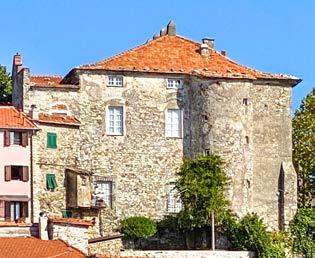
napoleonica e all’annessione al Regno di Sardegna.
È questo il periodo in cui operò Niccolò Giosafatte Biagioli (1772-1830), il più illustre dei vezzanesi. Grandissimo letterato, scrisse un commento della Divina Commedia che rimase in auge fino a tutta la I metà del sec. XIX. In forza del suo celebre indirizzo dell’«interpretare Dante con Dante», il Biagioli è senz’altro da annoverare come uno dei dantisti più influenti di ogni tempo.

dom that had never been conquered before, underwent the Napoleonic invasion and was eventually annexed to the Kingdom of Sardinia.
Niccolò Giosafatte Biagioli (1772-1830), the most illustrious personality in Vezzano, was active in this same period. A great author, he wrote an interpretation of the Divine Comedy, a work that stayed at the peak of popularity until the first half of the 19th century. By virtue of his famous «interpreting Dante with Dante», Biagioli can be certainly considered one of the most influential Dante scholars of all time.



Presso la Tenuta Il Giardino, ai piedi della medioevale Vezzano Ligure, tra vigne e ulivi, nella magica atmosfera della cantina e dell’antico frantoio, potrete gustare i nostri vini DOC Colli di Luni, l’Olio DOP Riviera Ligure, le olive e il miele.

At Tenuta Il Giardino, at the foot of medieval Vezzano Ligure, amidst vineyards and olive groves, in the magical atmosphere of the wine cellar and ancient oil mill, you can taste our Colli di Luni DOC wines, Riviera Ligure DOP olive oil, olives and honey.

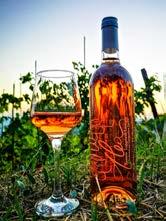
Frantoio: Via Vincinella, 13/6 Santo Stefano di Magra SP
Cantina: Via Giardino, 6 Vezzano Ligure SP
Tel. +39 0187 633329
Mob. +39 333 8520734
www.lucchieguastalli.com info@lucchieguastalli.com


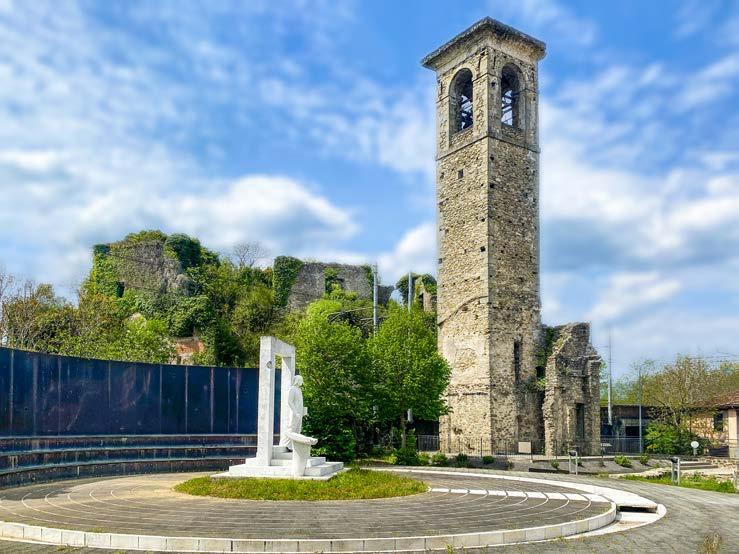
illafranca in Lunigiana, storico feudo dei Malaspina, è citata già nell’Itinerario di Sigeric del 990 d.C.. Essa sorse sui due lati dell’antica Via Francigena (un tratto del percorso originale ancora attraversa la parte storica del borgo) di cui il Castello di Malnido fu posto a controllarne il transito per secoli.
Nel 1221, all’atto della grande divisione dinastica voluta da Corrado l’Antico, il feudo fu parte della sponda ghibellina dello Spino Secco.
Dante ne celebra la figura di Corrado il Giovane, scomparso prematuramente nel 1294, collocandolo da protagonista nella Valletta dei Nobili al Canto VIII del Purgatorio. È a lui, infatti, che affida il celebre Elogio dei Malaspina, una glorificazione assoluta e insuperabile del famiglia mar-
illafranca in Lunigiana, historical fief of the Malaspina family, was already mentioned in Sigeric’s Itinerary in 990 AD. It arose on both sides of the ancient Via Francigena (a stretch of the original route still crosses the historic part of the village) and the Malnido Castle controlled the transits on this route for centuries. In 1221, at the time of the great dynastic division ordered by Conrad the Old, the fief was annexed to the Ghibelline side of Spino Secco (Dry Thorn). Dante celebrates the figure of Conrad the Young, who prematurely died in 1294, placing him as the protagonist in the Valley of Nobles in Canto VIII of Purgatorio. Dante chose him as the recipient of the famous Praise of the Malaspina, an absolute and insurmountable glorification of the family of marquises. The praise follows the structure of
chionale strutturata non solo sull’incipit del poema, ma pure su un passo notevole del Vangelo di Luca (Serena Pagani). Anche Giovanni Boccaccio non restò immune al fascino della corte di Corrado il Giovane, e da grande cercatore qual era di memorie per il suo Trattatello in laude di Dante, fece di lui e della figlia Spina i protagonisti di una novella tra le più corpose di tutto il Decamerone, la VI della II giornata. Adiacente al castello stanno le vestigia dell’antica chiesina di S. Nicolò in Malnido, dove oggi sorge un Parco Didattico Dantesco.
In questo tempietto si celebrò nel 1285 il matrimonio per procura di Margherita Malaspina, sorella di Moroello II di Giovagallo (il «vapor di Val di Magra» del Inf XXIV 145)
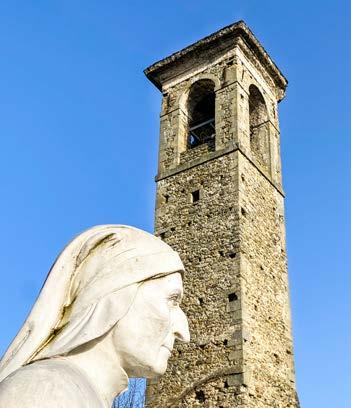
the incipit of the poem as well as of a remarkable passage of Luke’s Gospel (Serena Pagani). Even Giovanni Boccaccio was not immune to the charm of Conrad the Young’s court, and as a great seeker of memories for his Trattatello in laude di Dante, he chose him and his daughter Spina as the protagonists of one of the most substantial novels of the whole Decameron, the sixth of the second day. Next to the castle, the site with the remains of the ancient church of S. Nicolò in Malnido is now the location of a Dantesque Educational Park. In 1285, in this temple, Margherita Malaspina, sister of Moroello II di Giovagallo (the «vapour from Val di Magra» in Inf XXIV 145), and the illegitimate

Museo etnografico della Lunigiana “Germano Cavalli”

Alle origini del museo vi è un decennio di attività dell’associazione culturale “Manfredo Giuliani” di Villafranca, dedita alla ricerca etnografica relativa alla Lunigiana. I pezzi raccolti hanno preso forma museale nel 1977. Dal 5 dicembre 2022, il museo è stato intitolato a Germano Cavalli, colui che maggiormente si è speso per la valorizzazione dell’etnografia lunigianese.

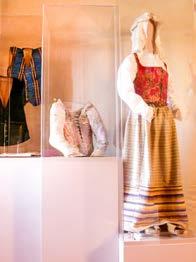
At the roots of the museum there is a decade of activity of the cultural association “Manfredo Giuliani” of Villafranca, committed to the ethnographic research related to Lunigiana. The collection was first exhibited in the museum in 1977. Since December 5th, 2022, the museum has been named after Germano Cavalli, the man who was committed, more than anybody, to the enhancement of the ethnography of Lunigiana.

Pasta fresca, prodotti tipici Lunigianesi...e non solo! Passione e tradizione dal 1989.
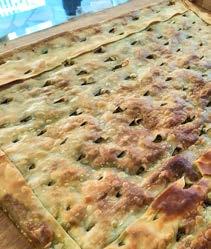
Fresh pasta, typical products from Lunigiana... and much more! Passion and tradition since 1989.


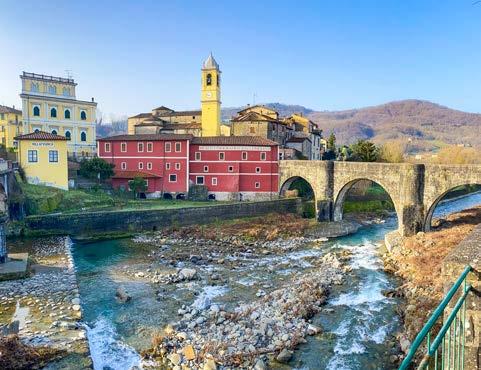
con un figlio spurio del conte Ugolino, colui che «la bocca sollevò dal fiero pasto» in Inferno XXXIII.
In tempi recenti è stato identificato il sacello dove furono deposte per secoli le spoglie dei nobili di casa Malaspina, tra cui senz’altro Corrado il Giovane, uno dei soli sei personaggi della Divina Commedia – ricordiamo – cui Dante si rivolge con la somma deferenza del “voi”.
Altro maniero di grande interesse posto nel comune ameno di Villafranca è il Castello di Malgrate, di cui si hanno notizie certe solo a far data dal 1351 ma certamente preesistente. La sua spettacolosa torre cilindrica, alta ben 25 metri, e le alte mura a merlatura guelfa, ne fanno uno dei castelli più caratteristici dell’Alta Val di Magra. Il castello è stato negli ultimi anni pienamente recuperato ed è divenuto meta imperdibile per turisti di ogni estrazione.
La sua mole caratteristica domina sulla grande piana dove al
Piazza della Resistenza, 10 Villafranca in Lunigiana (MS)
Tel. +39 0187.494677
puntoepasta89@gmail.com


son of Count Ugolino, the one who «raised his mouth from the fell repast» in Inferno XXXIII, married by proxy. In recent times, the votive chapel where the remains of the Malaspina nobles have been resting for centuries has been identified; the remains undoubtedly include Conrad the Young, who, it should be remembered, is among the only six characters in the Divine Comedy who are addressed by Dante with the utmost respect, using the pronoun “voi” (plural “you”). In the charming municipality of Villafranca, another manor house of great interest is the Castle of Malgrate, of which official documents date back to no earlier than 1351, but its existence can be certainly placed prior to this date. Its spectacular cylindrical tower, which is 25 metres high, and the high walls with Guelph battlements, make it one of the most characteristic castles of the Upper Magra Valley. In recent years the manor house has been fully restored, becoming an unmissable destination for tourists of all walks of life. Its distinctive structure dominates the large plain, on the edge of which we find another jewel, the Walled village of Filetto, with its magnificent Monumental Gate. In this green expanse, a coveted
Locanda con due sale, una ampia per banchetti e una più intima, in cui serviamo numerosi piatti della gastronomia locale di nostra produzione.
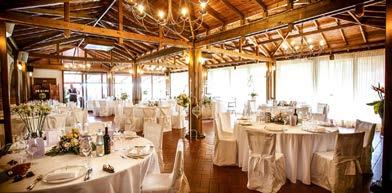
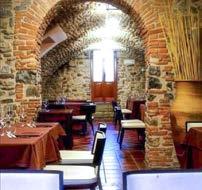


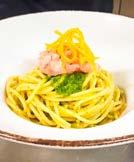


Inn with two rooms, a large one for banquets and a more intimate one, where we serve many dishes of our own production from the local culinary tradition.
Via Benedicenti, 50 - Loc. Mocrone Villafranca in Lunigiana (MS) Tel. +39 0187.495504
info@locandagavarini.it ∙ locandagavarini.it

margine si trova un altro gioiello, il Borgo murato di Filetto, con la sua magnifica Porta Monumentale. In quella verde distesa, ambita zona residenziale, trova spazio, tra miti e leggende affascinanti, la cosiddetta “Selva di Filetto”, un ampio castagneto oggi parco pubblico tipicamente frequentato per i pic-nic domenicali, che istanze campanilistiche hanno voluto indicare come la fonte ispiratrice della celebre «selva oscura» di Dante: nulla di più falso, ma turisticamente molto attrattivo.
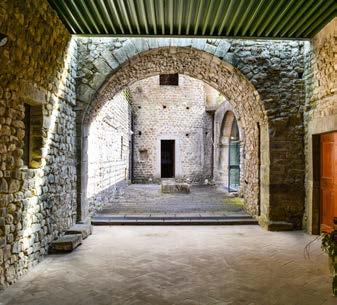
residential area, between myths and fascinating legends, there is the so-called “Selva di Filetto” (Wood of Filetto), a large chestnut grove which is now a public park and a popular destination for Sunday picnics. Parochial theories identified it with the source of inspiration for Dante’s famous «dark wood»: nothing could be more far away from the truth, but the location is nonetheless very appealing from the tourist point of view.



nche se la toponomastica non aiuta, l’origine di Mulazzo potrebbe affondare le radici all’epoca bizantina. Non certo a caso nel 1221, quando Corrado I Malaspina (“l’Antico” di Pur VIII 119) operò con il cugino Obizzino la divisione del Casato in Spino Secco /ghibellini) e Spino Fiorito (guelfo), Mulazzo fu capitale del ramo imperiale e Filattiera (di sicure origini bizantine con il suo Castrum Sorani) di quello papale.
Mulazzo la troviamo nominata nel diploma del 1164 dell’imperatore Federico il Barba-
lthough toponymy does not help, the origins of Mulazzo might be rooted in the Byzantine era. It is certainly not by chance that in 1221, when Conrad I Malaspina (“the Ancient” in Pur VIII 119) carried out, together with his cousin Obizzino, the division of the House into Spino Secco (Dry Thorn)/Ghibellines and Spino Fiorito (Blossomed Thorn)/Guelphs, Mulazzo was the capital of the imperial branch and Filattiera (of undeniable Byzantine origins with its Castrum Sorani) the capital of the papal branch. Mulazzo was mentioned in Frederick Barbaros-
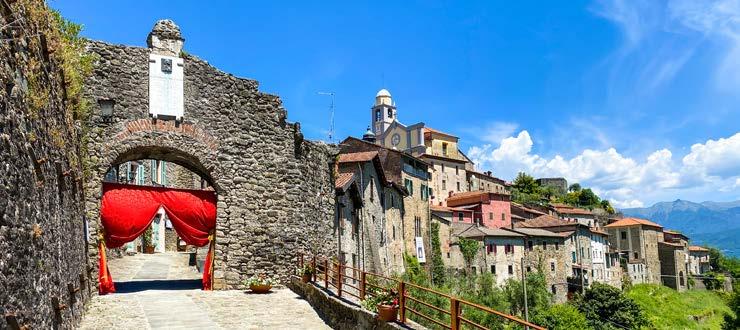

rossa che confermava i privilegi feudali a Obizzo Malaspina il Grande. Un altro diploma, del 1220, col sigillo dell’imperatore Federico II, lo Stupor Mundi, confermava a Corrado l’Antico che tra i beni malaspiniani di Lunigiana era «Mulatium cum tota Curia». Nel 1266 i tre figli dell’Antico, Moroello (il “vapor di Val di Magra” di Inf XXIV 145), Manfredi e Federico, si spartirono l’eredità dando origine ai singoli feudi marchionali di Mulazzo, Giovagallo (oggi Tresana) e Villafranca. Nell’aprile del 1306, anno dell’arrivo di Dante Alighieri, investito della missione diplomatica che portò alla Pace di Castelnuovo con il vescovo-conte di Luni (6 ottobre 1306), si tracciò un solco indelebile nella tradizione del borgo e di tutta la Lunigiana. Ma del castello in cui IL Sommo Poeta fu accolto resta solo l’antichissima torre obertenga (sec. X) detta da sempre “Torre di Dante”. Oggi il borgo storico monumentale di Mulazzo è un unico grande Parco Dantesco grazie alla novità mondiale del percorso esegetico della Via Dantis®. L’itinerario conduce dagli archi dell’acquedotto rinascimentale fino alle altezze panoramiche della Torre di Dante. Imperdibili il Dante, ultimo capolavoro scultoreo di

sa’s discharge papers from 1164, which confirmed the feudal privileges to Obizzo Malaspina the Great. Other discharge papers, dated 1220 and bearing the seal of Emperor Frederick II, the Stupor Mundi, confirmed to Conrad the Old that «Mulatium cum tota Curia» was among the Malaspinas’ properties in Lunigiana. In 1266, the three sons of Conrad the Old, Moroello (the “vapour from Val di Magra” in Inf XXIV 145), Manfredi and Federico, split the inheritance among themselves, thus creating the single fiefdoms of the marquisate: Mulazzo, Giovagallo (today’s Tresana) and Villafranca. In April 1306, the year of Dante Alighieri’s visit, on the occasion of the diplomatic mission that led to the Peace of Castelnuovo with the bishop-count of Luni (October 6th 1306), an indelible rift was imprinted in the tradition of the village and of the entire Lunigiana. The castle that accommodated the Supreme Poet only survives through the ancient tower of the Obertenghi family (10th century), which has always been referred to as “Dante’s Tower”. Today, the monumental historic centre of Mulazzo has become a large Dantesque Park, thanks to the worldwide innovation of the Via Dantis® exegetical path. The route leads from the arches of the Renaissance aqueduct to the high panoramic spot of Dante’s Tower. Dante, Arturo Dazzi’s last sculptural masterpiece, and the ‘Dante’s House in Lunigiana’ Museum are not to be missed. In the “Lunigiana of the 100 castles” - eight fortresses are proudly
Arturo Dazzi e il Museo ‘Casa di Dante in Lunigiana’. Mulazzo, però, vanta anche - nella “Lunigiana dei 100 castelli”ben otto fortezze. Di tutte, quella che si è meglio conservata è senz’altro il Castello di Lusuolo, di proprietà pubblica. La sua precisa destinazione è tuttora in corso di discussione. La nostra visione è che questo bellissimo fortilizio sia la sede naturale, oltre che di esposizioni storiche e museali permanenti, di un Outlet del prodotto tipico a Km zero a beneficio dell’economia del comprensorio particolarmente rivolto alla sottostante, frequentatissima, area di sosta autostradale, ma non solo.

located in Mulazzo. Among them, the best preserved one is undoubtedly Lusuolo Castle, which is a publicly-owned property. Its precise destination is still being debated. In our vision, this beautiful fortress would be the ideal habitat for permanent historical events and museum exhibitions, as well as the location where to find zero food mile products. The economy of the area would greatly benefit from the implementation of such a project, especially considering the extremely popular underlying motorway rest area, just to pick one example.
BIBLIOGRAFIA • BIBLIOGRAPHY
MIRCO MANUGUERRA, Dante e la pace universale: il Canto VIII del Purgatorio e altre questioni dantesche, Roma, Aracne, 2020.


“Dove la cultura è di casa”
“Where culture is at home”
Il museo ‘Casa di Dante in Lunigiana’ e il parco dantesco del borgo storico monumentale
The ‘Casa di Dante in Lunigiana’ museum and Dante’s park in the historic monumental village
Le Statue-Stele e gli antichi abitatori
Liguri-Apuani
The Statues menhir and the ancient Ligurian Apuans
Le vestigia e le memorie degli otto castelli medievali
The vestiges and memories of the eight medieval castles
Gli stemmi dei Malaspina e le memorie dei cantori provenzali
The coats of arms of the Malaspina family and the memories of the Provençal singers
Montereggio: Il “Cantamaggio” e l’epopea dei “Librai pontremolesi”
Montereggio: The “Cantamaggio” and the epic deeds of “Pontremoli’s booksellers”
Il navigatore Alessandro Malaspina (1754-1810)
The seafarer Alessandro Malaspina (1754-1810)
I vini e la cucina tipica lunigianese
Wines and typical cuisine of Lunigiana


er Alpem Bardonis Tusciam ingressus », ‘Porta di Toscana’, definivano i Longobardi la Lunigiana facendo chiaro riferimento alla zona del Pontremolese (“Alpe Bardonis” è l’odierno Passo della Cisa) e allo stesso modo si esprimeva il grande imperatore Federico II, lo Stupor mundi, il quale visitò più volte la città. Nel corso della sua ultima visita, nel febbraio del 1249, proveniente da Cremona, si trascinava appresso in catene Pier delle Vigne, il suo segretario particolare caduto drammaticamente in disgrazia (è il triste protagonista del Canto XIII dell’Inferno, quello della Selva dei Suicidi): nel chiaro l’intento di dare un esempio a quel comune irrequieto, che già aveva osato tendere un agguato a Federico il Barbarossa (trama

he Lombards defined Lunigiana as «Per Alpem Bardonis Tusciam ingressus», ‘Door of Tuscany’, with clear reference to the area of Pontremoli (“Alpe Bardonis” is today's Cisa Pass). The same expression was used by the great emperor Frederick II, the Stupor mundi, who visited the town on several occasions. During his last visit, in February 1249, coming from Cremona, he took with him his secretary in chains, Pier delle Vigne, who had dramatically fallen into disgrace (he is the miserable protagonist of Canto XIII of Inferno, the one with the Wood of Suicides): with the clear intention to give an example to that restless municipality, which had already dared to ambush Frederick Barbarossa (a plot foiled at the time by Obizzo Malaspina the Great), he cruelly for-

sventata a suo tempo da Obizzo Malaspina il Grande), lo faceva crudelmente abbacinare, come un volgare traditore, «in platea ecclesie Sancti Geminiani», cioè nella Piazzetta di S. Gemignano, dove a perpetua memoria del fatto è stata di recente apposta una epigrafe dedicatoria.
Un segno delle profonde divisioni che agitavano la turbolenta Pontremoli del tempo è la cosiddetta Cortina di Cacciaguerra, che divideva la parte guelfa da quella ghibellina. Resta di essa, quale struttura originaria, la Torre del Campanone, simbolo del borgo. Fu costruita nella prima metà del sec. XIV per volontà di Castruccio Castracani.

ced him to be dazzled, like a vulgar traitor, «in platea ecclesie Sancti Geminiani», which is St. Gemignano square, where a dedicatory epigraph has been recently added in perpetual memory of this event.
The so-called Cortina di Cacciaguerra (Cacciaguerra Curtain), which divided the Guelph part from the Ghibelline one, is evidence of the deep divisions that agitated the turbulent Pontremoli at the time.
The Torre del Campanone (Bell Tower), symbol of the town, is what remains of the original structure. It was built in the first half of the 14th century upon Castruccio Castracani’s request. Near the Church of San Pietro, Pontremoli preserves an exceptional pilgrimage site, which belongs to even more remote times. It’s


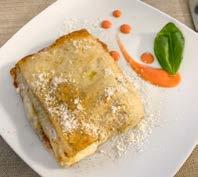

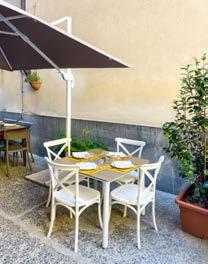
Piazza Duomo 31 - Pontremoli (MS) Tel. +39 340 7465839
paolo_caponi@libero.it
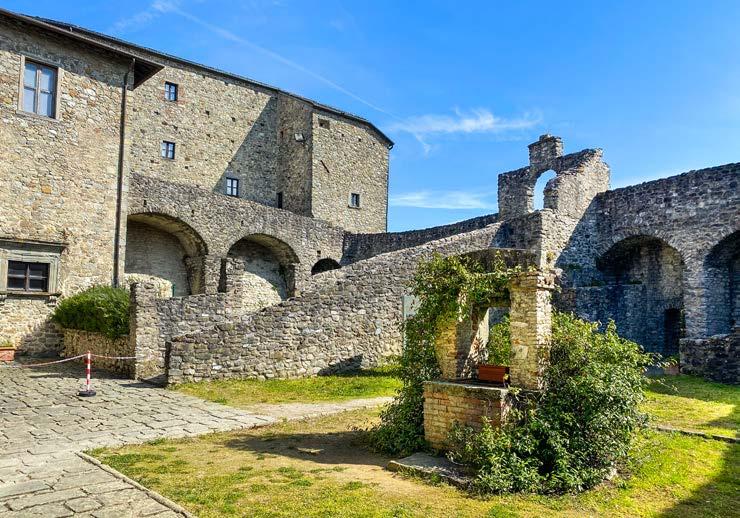
Di tempi ancora più remoti Pontremoli conserva, presso la Chiesa di San Pietro, una eccezionale memoria peregrinale. Si tratta dello splendido Labirinto in arenaria del sec. X, che è uno dei più iconografici tra quelli ad oggi pervenuti. Il Castello del Piagnaro, che domina dall’alto l’intero impianto cittadino, risale invece all’XI secolo. Sottoposto nelle varie epoche a diverse opere di trasformazione, oggi vede una sua grande porzione ospitare il prestigioso Museo delle Statue Stele della Lunigiana, chiara espressione di una civiltà preistorica lunigianese.
the magnificent sandstone Labyrinth from the 10th century, which is one of the most iconographic labyrinths to have survived to date.
The Piagnaro Castle, which dominates the entire town from above, dates back to the 11th century. Subjected to many changes throughout different eras, today it hosts the prestigious Museum of Lunigiana Stele Statues, a clear expression of Lunigiana’s prehistoric civilization.
Pontremoli was set on fire and sacked by

Pontremoli fu messa a fuoco e saccheggiata dall’esercito di Carlo VIII nel 1495, ma rinacque pian piano in veste nobiliare fino a diventare un’autentica capitale del Barocco. Oggi è una città d’arte ricca di monumenti pregevoli particolarmente votata al culto del Libro e dei Librai, come molto bene testimoniato dal Premio Bancarella.


Dal 2010 punto di riferimento per chi ama le specialità della cucina tipica lunigianese: dai ravioli di verdura “poveri” come da tradizione, alle torte d’erbi e di porri fino ai famosi testaroli.

Charles VIII’s army in 1495, but it was slowly revived as a noble town until it became an authentic Baroque capital. Today it’s a city of art, rich in valuable monuments and particularly devoted to the cult of Books and Booksellers, as very well attested by the Bancarella Award. Via Roma 9, Pontremoli (MS)



Since 2010 this has been a landmark for people who love specialty cuisine of Lunigiana: vegetable ravioli (called poor ravioli for the simple ingredients used) made as per tradition, vegetable pies with wild herbs and leek pies and the famous testaroli.


on la sua spiccata eleganza rinascimentale, Bagnone è certo il più spettacolare dei borghi della Lunigiana. Il tessuto rurale vede la zona del castello (oggi proprietà dei conti Ruschi-Noceti) arroccata su di un alto sperone di roccia, mentre la parte bassa del paese si sviluppa attorno al piccolo canyon creato nei millenni dalle acque turbinose

ith its remarkable Renaissance elegance, Bagnone is certainly the most spectacular village in Lunigiana. The rural fabric includes the area of the castle (now owned by the Ruschi-Noceti counts) perched on a high rocky spur, while the lower part of the village develops around the small canyon created, over the millennia, by the swirling waters of the homonymous stream that forcefully descends from the Lunigiana slopes of Mount Sillara (m. 1861), one of the main peaks in the National Park of the Tuscan-Emilian Apennines. The ancient Castle of Bagnone has survived through the imposing cylindrical tower in macigno stone crowned by a circle of characteristic brackets. The rest of the structure has been incorporated over the centuries in the appurtenances of the counts’ villa. It underwent significant changes due to interventions carried out in the 19th century; today it’s characterised by an imposing portico that dates back to the
dell’omonimo torrente che scendono con forza dalle pendici del versante lunigianese del Monte Sillara (m. 1861), una delle vette principali del Parco Nazionale dell’Appennino Tosco-Emiliano. Dell’antico Castello di Bagnone resta l’imponente torrione cilindrico in pietra serena coronato da una cerchia di caratteristici beccatelli. Il resto dell’impianto è stato nei secoli inglobato dalle pertinenze della villa comitale, a sua volta ampiamente trasformata da interventi ottocenteschi e caratterizzata oggi da un imponente porticato che risale ai primi anni del ‘900. Purtroppo la struttura non è aperta al pubblico, ma se ne gode da ogni angolo del borgo

early 20th century. Unfortunately, the structure is not open to the public, but you can enjoy this spectacular sight from every corner of the village. This enchanted village still looks like it did in the 15th century, when, together with Fivizzano, it represented the cradle of Humanism in Lunigiana, with the spice merchant and chronicler Antonio da Faye, and Pietro Noceti, head of the Pontifical Secretariat under Niccolò
Loc. Mochignano Chiesa, 3 Bagnone (MS) Tel. +39 339.2953635

L’agriturismo, nato nel 2014 come attività connessa all’azienda agricola attiva dal 1930, offre ai nostri clienti prodotti genuini e caserecci in un ambiente rustico e familiare. Inoltre dispone di 6 camere da letto. Fra i prodotti più richiesti i nostri “tordei” e l’agnello fritto.




The holiday farm was established in 2014 as a continuation of the activity of the farm, which has been active since 1930. In this rural and familiar environment customers can enjoy genuine and homemade products. It has 6 bedrooms. Our “tordei” and fried lamb are some of the most requested dishes.
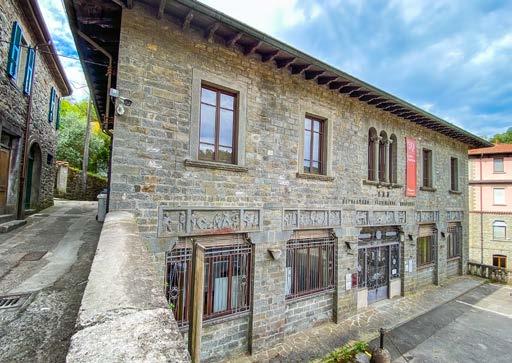
uno splendido colpo d’occhio. Questo paese incantato appare ancora quello che nel corso del XV secolo, assieme a Fivizzano, rappresentò la culla dell’Umanesimo lunigianese, con lo speziale cronista Antonio da Faye e Pietro Noceti, capo della Segreteria Pontificia sotto Niccolò V (1397-1455), il grande pontefice sarzanese artefice del progetto della Grande San Pietro e della Biblioteca Vaticana.
Altro castello di rilevanza storica è quello della frazione di Castiglione del Terziere, che si pensa sia stato edificato su di un remotissimo insediamento fortificato del limes bizantino. Dal 1202 fu dei Malaspina, poi di Castruccio Castracani degli Alteminelli, condottiero e signore di Lucca, che stabili qui una roccaforte nell’ambito del progetto ambizioso, poi fallito, di unificare in un unico dominio la Lunigiana, la Garfagnana, e la






V (1397-1455), the great pontiff from Sarzana who promoted the projects of the Basilica of Saint Peter and the Vatican Library.
Another castle of historical importance is the one located in the hamlet of Castiglione del Terziere, which is thought to have been built on a very remote fortified settlement of the Byzantine limes. From 1202 it was owned by the Malaspina; afterwards, it became a property of Castruccio Castracani degli Alteminelli, warlord and lord of Lucca, who established here a stronghold as part of the ambitious project, which eventually failed, to unify Lunigiana, Garfagnana and Lucchesia under a single supremacy.
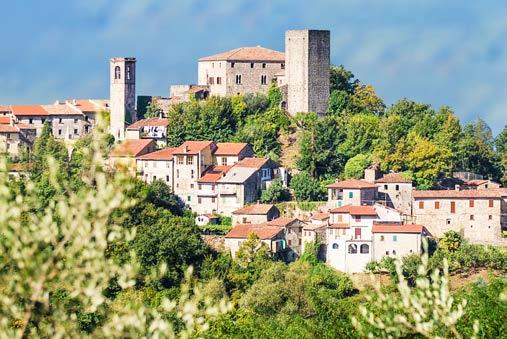

Lucchesia. Il castello tornò a rivestire una certa importanza dal 1451, quando divenne sede del capitanato di giustizia Fiorentino in Lunigiana grazie alla posizione di controllo che esercitava sulle importanti vie di comunicazione pedemontane. Seguì un lungo periodo di degrado, fino a quando, nel 1969, fu infine acquistato dal poeta e scrittore Loris Jacopo Bononi (1929-2012), che lo restaurò e ne fece sede di un centro di studi umanistici divenuto, grazie alla sua straordinaria biblioteca, una realtà di importanza nazionale.
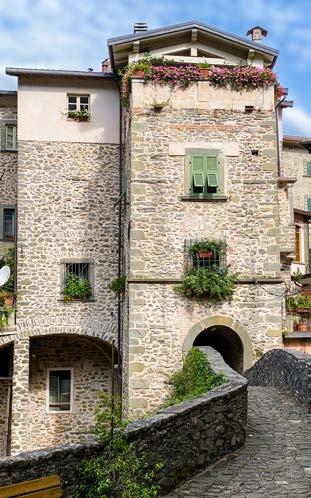
The castle regained a certain importance in 1451, when it became the seat of the Florentine captaincy of justice in Lunigiana thanks to its position of control over the important communication roads of the foothills. A long period of degradation followed, until, in 1969, it was finally bought by the poet and writer Loris Jacopo Bononi (1929-2012), who restored it and turned it into a centre for humanistic studies that became, thanks to its extraordinary library, an institution of national importance.

Punto di riferimento per la cucina della tradizione lunigianese e non solo. Il menù varia tra antipasti tipici, testaroli, Agnello di Zeri, tagliata di prima qualità, ottime pizze e focaccette e si conclude con dolci fatti in casa. Ampio salone interno e rinnovato dehor esterno che possono accogliere la clientela durante tutte le stagioni.

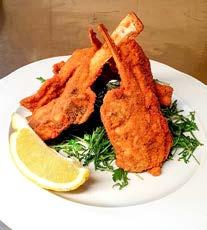
A landmark for the traditional cuisine of Lunigiana and much more. The menu varies, you can taste typical starters, testaroli, lamb from Zeri, top quality sliced beef -tagliata, excellent pizzas, focaccias and you can finish your meal with delicious homemade desserts. The large dining area and a renovated outdoor space welcome customers in all seasons.


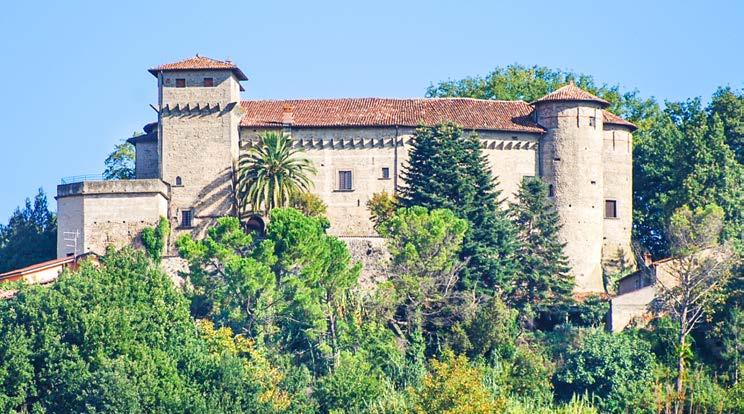
icciana Nardi è un comune ricchissimo di storia. In località Monti, dove si erge sul colle un bellissimo castello, un tempo era Venelia, toponimo di tipica origine ligure-apuana. L’antichissimo nucleo sorgeva in una ampia piana in cui, non a caso, è stato rinvenuto un cospicuo gruppo di Statue-stele lunigianesi, monumenti megalitici il cui fenomeno inizia nell’Età del Rame.
Il Medioevo non fu di minor gloria, se veramente è Terrarossa quella Rubra citata assieme a Pulica e a Bibola nella Cosmografia dell’Anonimo Ravennate, geografo di epoca bizantina. Qui esercita ancora la sua autorità lo splendido castello da sempre posto a diretto presidio della Via Francigena. Di epoca rinascimentale è invece un terzo castello, quello della Bastia, anche se le sue origini dovettero essere molto più profonde, posto com’è, in alto, a difesa del nucleo di Licciana. Delle vicende legate al maniero (uno dei più belli di tutta la Lunigiana) è celeberrima la storia di Annetta Malaspina, donna di bellissimo fascino e aspetto a cui non fu indifferente il poeta neoclassico Vincenzo Monti, che le dedicò un Carme di ben 130 versi (“Alla marche-
icciana Nardi is a town full of history. The district of Monti, where a beautiful castle stands on the hill, was once known as Venelia, a toponym of clear Ligurian-Apuan origin. The ancient centre was situated on a large plain where, unsurprisingly, a large group of statues menhir of Lunigiana was found. The phenomenon of these megalithic monuments began in the Copper Age. The Middle Ages were glorious times as well, if it is true that Terrarossa coincides with the Rubra mentioned together with Pulica and Bibola in the Cosmography by the Anonymous from Ravenna, a geographer of the Byzantine era. Here, the splendid castle, which

sa Anna Malaspina della Bastia”, 1891). Sposata al marchese di Mulazzo Giovanni Malaspina, questa nobildonna finì al centro delle attenzioni della corte di Parma, la quale pensò bene di inviarla in missione diplomatica presso la corte di Francia per conquistarsi i favori di Luigi XV. La presenza ingombrante di una cortigiana come Madama Pompadour fece fallire i piani, tuttavia il soggiorno parigino fruttò ad Annetta, oltre ad una fama peperina, una pensione elargita direttamente dalla corte francese. Nella successiva epoca Risorgimentale, in quella Lunigiana montana dell’antico percorso di valico di Malpasso, oggi Passo del Lagastrello, si registrarono i natali di Anacarsi Nardi (1800-1844). Nato nella frazione di Apella, sopra Tavernelle, l’eroe trovò gloria in quel di Corfù in seguito alla sfortunata campa-
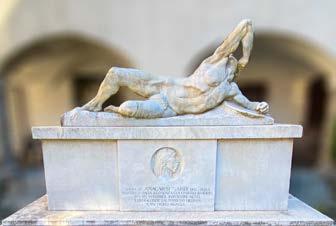
has always guarded the Via Francigena, still exerts its authority. A third castle, precisely the Bastia castle, is said to belong to the Renaissance era even though its real origins have to be much more ancient, given that it was built on a high location to protect Licciana. One of the most famous stories linked to the castle (one of the most beautiful examples in the entire Lunigiana) is that of Annetta Malaspina, an incredibly charming woman whose beauty definitely had an impact on the neoclassical poet Vincenzo Monti, who dedicated a poem of 130 verses to her (“Alla marchesa Anna Malaspina della Bastia”, “To the Marchioness Anna Malaspina of Bastia”, 1891). This noblewoman, who was married to Giovanni Malaspina, Marquis of Mulazzo, drew the attention of the court of Parma and, as a consequence, she was sent on a diplomatic mission to the court













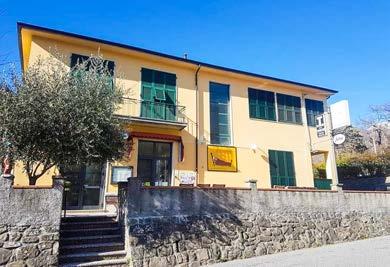
Ristorante e Casa Vacanze nella Valle del Taverone, ai piedi dell'Appennino Tosco Emiliano, il ristorante offre piatti tipici della tradizione lunigianese, prelibati ravioli al ragù, piatti a base di cacciagione e funghi.

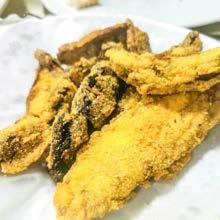
Via Val d'Enza 19
Tavernelle (MS)
Tel. +39 0187.425038 stemelo84@libero.it
Restaurant and Holiday House in the Taverone Valley, at the foot of the Tuscan Emilian Apennines, the restaurant offers typical, traditional dishes from Lunigiana, delicious ravioli with meat sauce, dishes based on game and mushrooms.

gna capitanata dai Fratelli Bandiera. Lo splendido monumento funebre, apposto nel centro storico di Licciana per il genio dello scultore spezzino Angiolo del Santo, è un vero capolavoro.
In onore del patriota, nel 1933 fu aggiunto il suo cognome nella denominazione del comune. Da segnalare anche i natali, proprio in Licciana, di un altro grande esponente del patriottismo italico: Alceste De Ambris (1874-1934). Egli fu l’estensore della Carta del Carnaro, la Costituzione di Fiume voluta dal d’Annunzio che ispirò non poco i Padri Costituenti della Repubblica. Una figura di enorme spessore.

of France to win the attention of Louis XV. The cumbersome presence of a court lady like Madame Pompadour caused the plan to fail; however, this Parisian stay resulted in Annetta building a reputation of being a feisty woman as well as in a pension granted to her directly by the French court.
In the following Risorgimento era, in the mountain area of Lunigiana that includes the ancient Malpasso pass, today’s Lagastrello Pass, Anacarsi Nardi (1800-1844) was born. Born in the hamlet of Apella, above Tavernelle, this hero achieved glory in Corfù, following the unfortunate campaign led by the Bandiera Brothers. The splendid funeral monument, located in the historic centre of Licciana thanks to the masterful artistry of sculptor Angiolo del Santo from Lazio, is a true masterpiece. In 1933, the surname of the patriot was added to the name of the municipality in his honour. We should absolutely mention another great exponent of Italian patriotism who was born precisely in Licciana: Alceste De Ambris (1874-1934). He was the author of the Charter of Carnaro, the Constitution of Rijeka desired by d’Annunzio that greatly inspired the Constituent Fathers of the Republic. A crucial figure.

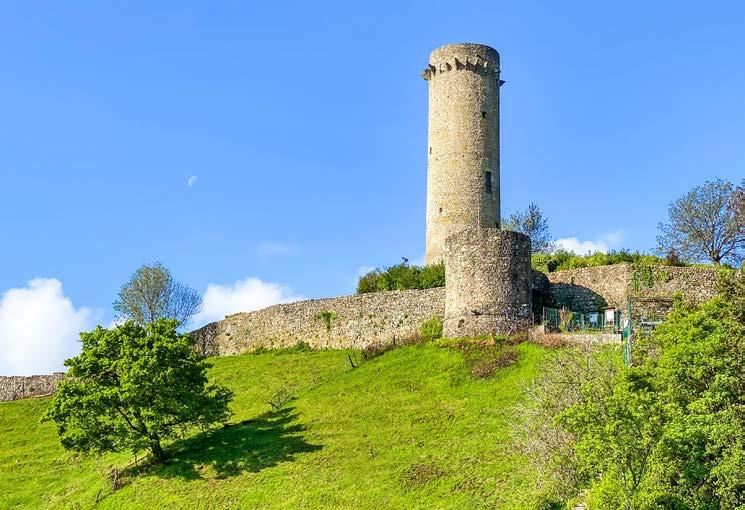
el Castello di Comano si sa che nell'884 fu donato dal marchese e duca di Toscana Adalberto I al monastero benedettino di Aulla.
Nel 1164 Federico Barbarossa attribuì il feudo a Obizzo Malaspina il Grande con diploma imperiale.
Nel 1352 un altro Grande, Spinetta Malaspina, lo lasciò in eredità ai suoi legittimi eredi (1352), cioè i nipoti Gabriele, Guglielmo e Galeotto Malaspina, figli del fratello Azzolino II.
In seguito Comano dapprima divenne parte del marchesato di Fivizzano, poi passò sotto la repubblica fiorentina (1478). Tornò una frazione di Fivizzano nel 1811 sotto l’impero napoleonico e divenne infine comune autonomo soltanto nel 1919. Dei tempi antichi restano in Comano le vestigia fascinose del castello, della cui struttura originaria è però solo il dongione, cioè la splendida torre fortificata a pianta circolare. Le mura sono di epoca quattrocentesca.
e know that in 884 the Castle of Comano was donated to the Benedictine monastery of Aulla by the Marquis and Duke of Tuscany Adalbert I. In 1164, Frederick Barbarossa granted the fief to Obizzo Malaspina the Great through an imperial certificate. In 1352, Spinetta Malaspina, who was also called the Great, bequeathed it to his legitimate heirs (1352), namely his nephews Gabriele, Guglielmo and Galeotto Malaspina, his brother Azzolino II’s sons. Later, Comano was included in the marquisate of Fivizzano, before becoming part of the Florentine republic (1478). In 1811, under the Napoleonic Empire, it became again a hamlet of Fivizzano and finally, in 1919, it reached the status of independent municipality.
The fascinating remains of the castle of Comano are a testament to ancient times. However, only the dungeon, the splendid fortified tower with a circular plan, is all that


Un’altra vestigia di grande importanza è conservata nella sacrestia della Chiesa di S. Maria Assunta di Crespiano. Si tratta dell’Epigrafe di Otone (1078), che così recita: «Anno ab incarnacione Domini millesimo septuaginta VIII quando restaurata fuit ista ecclesia Oto magister me fecit». L’iscrizione pone in evidenzia la figura di un Mastro Otone quale artefice della ristrutturazione della pieve, la quale è dunque di fondazione assai più antica.
Parliamo di uno degli scritti tra i più antichi della Lunigiana Storica, la cui grande particolarità è data dai punti di separazione delle parole inseriti in modo erroneo, interposti cioè anche alle lettere di una medesima parola.
Potrebbe essere un segno evidente che il lapicida fosse un analfabeta, ma è più probabile che stesse copiando senza più conoscere il latino: se il chierico lasciò passare la cosa, e se nessun’altro sollevò obiezioni, è perché ormai, intorno al Mille, anche nei borghi lunigianesi la popolazione (il volgo) cono-
remains of the original structure. The walls were added in the 15th century. Other relics of great importance are preserved in the sacristy of the Church of S. Maria Assunta in Crespiano. We are referring to the Epigrafe di Otone (1078), which reads: «Anno ab incarnacione Domini millesimo septuaginta VIII quando restaurata fuit ista ecclesia Oto magister me fecit». The inscription refers to Master Otone as the person responsible for the restoration of the parish church, which has therefore much older origins. This is one of the oldest writings of Historical Lunigiana; its great peculiarity is the incorrect punctuation, with the full stops inserted between letters of the same word. This could mean that the stonemason was illiterate or, more likely, that he was copying without having a knowledge of Latin: if the cleric didn’t object to
sceva esclusivamente la nuova parlata (detta perciò volgare), quella stessa che il grande padre Dante avrebbe poi reso “illustre” con il suo fondamentale De vulgari eloquentia e infine glorificata nell’eternità della Divina Commedia.

it and nobody else raised any objections, it is because around the year 1000, even in the villages of Lunigiana, the common people only knew the new language (called vernacular), the same one that was celebrated by Dante in his crucial work De vulgari eloquentia, before being eternally glorified in the Divine Comedy.

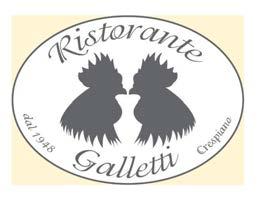

Dal lontano 1948, prepara delizie culinarie secondo le antiche ricette tradizionali lunigianesi, offrendo piatti abbondanti e una cucina curata. Luca, attuale gestore e pronipote del fondatore, accoglie gli ospiti in un locale moderno e


Since 1948, it has completamente rinnovato. prepared culinary delights following the ancient traditional recipes of Lunigiana, offering hearty dishes and a refined cuisine. Luca, the current manager and great-grandson of the founder, welcomes the guests in a modern and completely renovated space.




l Castello di San Giorgio è il vero simbolo della città della Spezia. Fu edificato nel 1252 sul colle del Poggio, alle spalle del primo nucleo abitato, per iniziativa di Niccolò Fieschi, il grande esponente di parte guelfa genovese, conte palatino, che cullò il progetto di una propria signoria nella Liguria del Levante di cui La Spezia, con suo porto, avrebbe dovuto essere capitale e fulcro vitale. È proprio con la fondazione del Castello di San Giorgio che è lecito parlare di fondazione della città. Non parliamo di un battesimo di poco conto, perché Niccolò fu padre di quella Alagia Fieschi che Dante, per bocca dello zio papa Adriano V, definisce "buona da sé" in Pur XIX 142-145 e che fu sposa di Moroello Malaspina, nientemeno che il “vapor di Val di Magra” di Inf XXIV 145. La fortificazione possiede due ingressi, su cui erano posti l'emblema di Genova e l'effigie di San Giorgio. Oggi il maniero è sede del Museo Civico Archeologico ‘Ubaldo Formentini’, ricco dell’intera collezione della preistoria lunigianese, con una buo-
he San Giorgio Castle, overlooking La Spezia from the Poggio (Hillock), is the true symbol of the town. It was built in 1252 upon request of Niccolò Fieschi, Palatine count, the great exponent of the Genoese Guelph party who clinged to the dream of establishing a lordship in Liguria del Levante, where La Spezia and its port would be the capital and vital hub. In our opinion, it’s legitimate to think that the construction of the San Giorgio Castle coincided with the foundation of the town. We are not talking about an inauguration of little importance, because Niccolò was father to the same Alagia who was defined by Dante, through the figure of Pope Adrian V, as “good in herself ” in Pur XIX 142-145. She was married to Moroello Malaspina, none other than the “vapour from Val di Magra” in Inf XXIV 145. The fortress has two entrances, which bore the emblem of Genoa and the effigy of St. George. The Castle is home to the ‘Ubaldo Formentini’ Civic Archaeological Museum, which houses the entire collection of the prehistory of Lunigiana, a great assemblage of the original statues menhir of

na raccolta di statue-stele della Lunigiana originali (tra cui la Verrucola, opera di un Michelangelo di 5.000 anni fa), e della Collezione Fabbricotti di preziosissimi reperti romani dell’antica metropoli di Luni. Nell’antica Via del Torretto, che corre proprio sotto il castello, si può osservare il Palazzo San Giorgio, antico albergo di epoca futurista. Sul tetto fa bella mostra di sé la Statua di San Giorgio, opera di Augusto Magli: tenendo la spada tenuta premuta sulla testa del drago, il santo guerriero, ritto come una sentinella, controlla la situazione guardando il mare. Un vero capolavoro. Dal castello originava la grande cerchia muraria della città, di cui
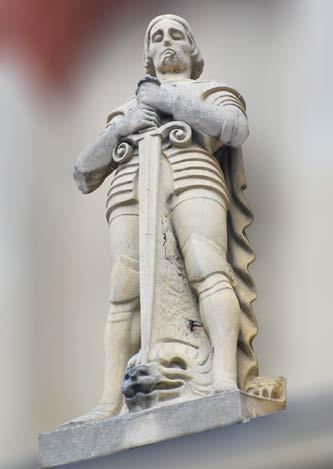
Lunigiana (including the Verrucola, the work of a sort of Michelangelo from 5,000 years ago) and the Fabbricotti Collection, with the precious Roman finds of the ancient metropolis of Luni. In the ancient Via del Torretto, which runs right below the castle, you can see Palazzo San Giorgio, the work of Franco Oliva, a futurist architect.
On the roof, the beautiful Statue of St. George, by Augusto Magli, stands out keeping his sword pressed against the head of the dragon. Like a sentry, he controls the situation with his gaze towards the sea. A true masterpiece. The great ring of walls of the city originated from the castle and its important

Via Manzoni 45 - La Spezia +39 0187.301669 info@osteriadeicamalli.com
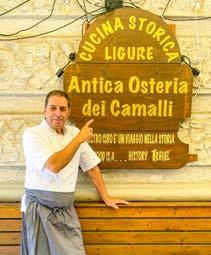
L’Osteria propone piatti della cucina tradizionale e storica ligure, ricette dimenticate o poco conosciute di origine umile, frutto di ricerca di antichi sapori, per un viaggio nella storia dal 1800 ad oggi.


49

The Tavern offers traditional cuisine and historical Ligurian, forgotten or little-known recipes of humble origin, the result of a search for ancient flavors, for a journey through history from 1800 to today.




LE NOSTRE RICETTE OUR RECIPES

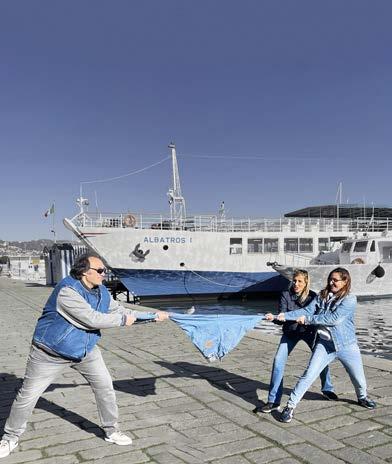
Moda, qualità e convenienza!
Vasto assortimento di jeans e abbigliamento sportivo e classico, delle migliori marche, uomo e donna.
Fashion, quality and convenience!
Larg e assortment of jeans, sports and classic clothing for men and women, from the best brands.







sono ancora riconoscibili importanti vestigia. La cinta, potenziata nei secoli successivi fino al XIX secolo, si ripropone oggi, in tutta la sua prestanza, grazie al Parco delle Mura. Valorizzato dal brand “La Spezia Forte”, il parco rappresenta un percorso che, legando le mura ai numerosi forti militari presenti sui colli che delimitano l’intero Golfo dei Poeti, illustra i confini naturali della Spezia pre e post arsenalizia. Un recupero di enorme importanza sia culturale che turistica, tanto che ha dato origine, sul concetto del Golfo, ad un altro format: il Sentiero dei Poeti.

vestiges can still be admired. The walls, which were reinforced in the following centuries until the 19th century, are now reintroduced in all their prestige, thanks to the Parco delle Mura. Promoted by the brand “La Spezia Forte”, the park represents a path that, linking the walls to the numerous military forts on the hills that delimit the entire Gulf of Poets, illustrates the natural boundaries of La Spezia pre and post navy yard. A resource of enormous cultural and tourist importance, so much so that it gave rise, following the theme of the Gulf, to another format: the Path of Poets.



erici, con Portovenere, è una delle due perle del Golfo dei Poeti. In origine, in verità (1910), il concetto era tutto suo, ma poi, per estensione dello stesso creatore dello stilema, il drammaturgo Sem Benelli, tutta la grande insenatura del Golfo della Spezia, che per la sua bellezza ha ispirato firme grandissime, è stata elevata alla gloria di Calliope. Quando si parla di Lerici si pensa subito al suo castello di fattura pisano-genovese. Per dare un’idea del clima che qui si respirava agli inizi del 1200, un’epigrafe esposta nelle mura esterne della fortezza recitava «STOPA BOCA AL ZENOESE/ CREPACOR ALO PORTOVENERESE/STREPA TORSELLO ALO LUCCHESE», cioè ‘Bocca chiusa al Genovese, dolore fatale al Portovenerese, mercato chiuso al Lucchese’, con tanti bei saluti a tutti. La fortezza, però, già nel 1257 fu definitivamente in mano genovese e agli albori del sec. XIV, sotto la sua ombra, è storicamente richiesto il passaggio di Dante, come suggerito dal celebre passo «da Lerice a Turbìa» in Pur III 49: precisamente nel 1314 (la stessa data della fondamentale Epistola di frate Ilaro, relati-
ogether with Portovenere, Lerici is one of the two pearls of the Gulf of Poets. As a matter of fact, the concept originally (1910) only applied to Lerici, but then, the author of this expression, the playwright Sem Benelli, extended the meaning to cover the whole bay of the Gulf of La Spezia, which inspired great authors with its beauty and was elevated to the glory of Calliope. When we talk about Lerici we immediately think of its castle of Pisan-Genoese origins. To describe the climate that was breathed here at the beginning of the 1200s, an epigraph on the external walls of the fortress read «STOPA BOCA AL ZENOESE/CREPACOR ALO PORTOVENERESE/STREPA TORSELLO ALO LUCCHESE», which means ‘Mouth closed to the Genoese, fatal pain to the people of Portovenere, market closed to the people of Lucca’, ‘kind’ greetings to everybody. However, as early as 1257, the fortress definitively fell to the hands of the Genoese. Dante’s visit can be historically placed at the beginning of the 14th century, when the village was still under Genoa, as suggested by the famous passage «between Lerici and Turbìa» in Pur III 49: from Leri-

Trova nella nostra trousse tutto ciò che ti occorre per sentirti più bella! Smalti, scarpe, borse, profumi, creme,

accessori e molto altro, vieni a scoprirlo alla Trousse di Mary Poppins!


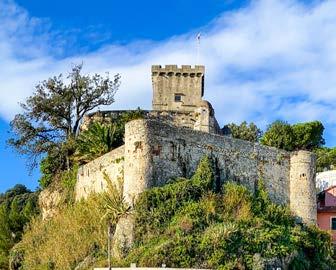
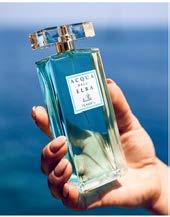
Here you can find everything you need to feel more beautiful! Nail polishes, shoes, bags, perfumes, lotions, accessories and much more. Come visit us to find out!


Piazza Cavallotti, 11
San Terenzo di Lerici (SP) Tel. +39 391.3345404
va all’antico cenobio benedettino di Santa Croce del Corvo della vicina Bocca di Magra, Dante si unì da Lerici alla delegazione cardinalizia mossa per nave alla volta della Francia in occasione del conclave a Carpentras (frequentazione da cui nacque l’Epistola XI ai Cardinali). Nel territorio lericino esiste anche un altro spendido castello ed è quello, assai più piccolo, del graziosissimo borgo di San Terenzo, dove ancora si conserva la splendida Villa Magni, la magione dove nel 1822 alloggiarono, quasi sul mare, Lord Byron, Percy Bysshe Shelley e Lady Mary Wollstonecraft Godwin, la ben più celebre Mary Shelley, autrice del Frankenstein . Si sa che la piccola fortezza fu costruita nel 1360 dagli abitanti del paese, di loro iniziativa, allo scopo di proteggersi dagli attacchi della pirateria saracena; non a caso la grotta che si apre a fianco del promontorio roccioso sul quale sorge la costruzione è detta da sempre “Tana dei Turchi”. Inizialmente il castello era costituito da un mastio merlato alto circa una decina di metri; poi, in tempi successivi, alla torre quadrata fu aggiunta la cinta muraria. Luogo estremamente romantico, è imperdibile la sottostante passeggiata a mare che corre tra una spiaggetta sabbiosa nascosta e la sua fedelissina cortina di scogli.


tially, the castle consisted of a crenellated keep about ten metres high; later, the ring of walls was added to the square tower. The underlying promenade that runs between the hidden sandy beach and its loyal barrier of rocks is an extremely romantic place that cannot be missed.
BIBLIOGRAFIA • BIBLIOGRAPHY
MANUGUERRA MIRCO, Sul Viaggio di Dante a Parigi, su «Atrium», XIX/3 (2017), pp. 134-158
SANGUINETI CARLA, Figlia dell’amore e della luce. Mary Shelley nel golfo dei Poeti, Genova, Sagep, 2000.



ortus Veneris è citata nel cosidetto “Itinerarium Antonini”, datato al 161 d.C. Il toponimo deriva dal tempio della dea di cui restano tracce nell’attuale Chiesina di San Pietro, un gioiello famoso in tutto il mondo.
Il borgo di Portovenere, abitato fin dall’origine non solo da pescatori, ma anche da abilissimi uomini di mare, subì l’assalto dei longobardi di re Rotari nel 643 d.C.. Sappiamo tuttavia che al tempo della grande restaurazione carolingia aveva mantenuto intatta la propria notevole importanza di scalo portuale se è vero che nell’801 le cronache narrano dell’arrivo in nave di un elefante quale dono di un sultano a Carlo Magno, fresco di incoronazione imperiale. Come tanti altri borghi costieri liguri, anche Portovenere, tra il IX e l’XI secolo, dovette fronteggiare le ripetute incursioni delle navi normanne e saracene. Poi, intorno all’anno Mille passò sotto il controllo dei Signori di Vezzano e quindi (sec. XII) sotto l’egida della potentissima Repubblica di Genova, quando questa la pretese in acquisto dovendo assolutamente reagire
ortus Veneris is mentioned in the so-called “Itinerarium Antonini”, dated 161 AD. The toponym comes from the temple of the goddess whose traces are now preserved in the Church of San Pietro, a world-famous jewel.
The village of Portovenere, which was initially only inhabited by fishermen and extremely skilled seafarers, was attacked by the Lombards of king Rotari in 643 AD. However, at the time of the great Carolingian restoration it retained a considerable importance as a port of call; as proof of this, chronicles narrate that in 801 a ship landed here with an elephant sent as a gift from a sultan to Charlemagne, who had just been crowned emperor.
Like many other Ligurian seaside villages, Portovenere, between the 9th and 11th century, had to frequently deal with the incursions of Norman and Saracen ships. Later, around the year 1000, it fell under the control of the Lords of Vezzano and after that (12th century) under the aegis of the very powerful Republic of Genoa, which claimed the village as a property in reaction to the fortification of Lerici carried out
all’incastellamento di Lerici attuato da Pisa, altra grande repubblica marinara del tempo.
Risalgono a questo preciso periodo la fortificazione del borgo, con il suo Castello, la Chiesa di San Lorenzo, il borgo nuovo (castrum novum) - che con il suo sistema di case-torri prospicienti gli scogli dava protezione all’intero impianto urbanistico - e le ampie mura con le tre torri tuttora molto ben conservate. Nel corso del sec. XIII, alla sconfitta della coalizione guelfa genovese contro la marineria di Federico II di Svevia, nel 1241 all’Isola del Giglio, fece seguito l’anno successivo una scaramuccia tra le due flotte al largo delle coste liguri di Levante che troviamo esaltate come un vero trionfo nel Poema della Vittoria, composto tra il 1245 e il 1248 in esame-

by the other great maritime republic of the time, Pisa.
The fortification of the village, with its Castle, the Church of San Lorenzo, the new hamlet (castrum novum) - which protected the entire urban territory with its system of tower-houses overlooking the rocks - and the large walls with the three towers, which are still very well preserved, dates back to this precise period.
In the 13th century, the defeat of the Genoese Guelph coalition against the fleet of Frederick II of Swabia (1241, Isola del Giglio) was followed, in 1242, by a skirmish between the two fleets off the Ligurian coast of Levante; these deeds are celebrated as a true triumph in the Poema della Vittoria (Poem of Victory), written between 1245 and 1248 in Latin hexameters by the notary Ursone


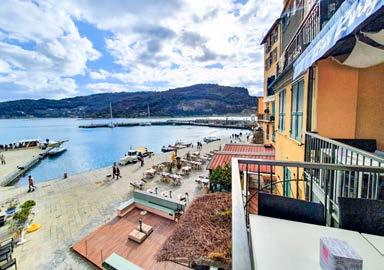
La Darsena TAPAS & LOUNGE BAR basa la propria proposta culinaria sulla stagionalità e la freschezza dei prodotti. Tradizione, contaminazione e innovazione sono i tre concept a cui si ispira il locale.


Capellini,
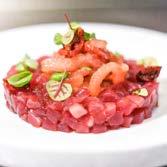
The Darsena TAPAS & LOUNGE BAR bases its culinary offer on the seasonality and freshness of the products. Tradition, fusion and innovation are the three concepts that inspire the restaurant.


tri latini dal notaio Ursone da Vernazza, di sicuro ottimo conoscitore di questi luoghi. Pochi anni dopo, nel 1244 sappiamo che fece tappa a Portovenere, reduce da Civitavecchia, la flotta genovese che aveva tratto in salvo Innocenzo IV (al secolo Sinibaldo Fieschi). Il papa era scampato ad un agguato tesogli dall'imperatore eretico e per sua maggior tranquillità era diretto a Lione, dove poi indisse un Concilio. Si preparò così la cattività Avignonese dei Papi che tanto assillò Dante ai primi del Trecento. Dal XIV secolo in poi molte e variegate
da Vernazza, who was certainly an excellent connoisseur of these places. A few years later, in 1244, he stopped in Portovenere, returning from Civitavecchia, where the Genoese fleet had rescued Innocent IV (whose real name was Sinibaldo Fieschi). The pope had escaped an ambush attempted by the heretic emperor and therefore, for his own safety, he was on his way to Lyon, where he was going to convene a Council. This was how the Avignon captivity of Popes started, an event that tormented Dante at the beginning of the 14th century. From the 14th
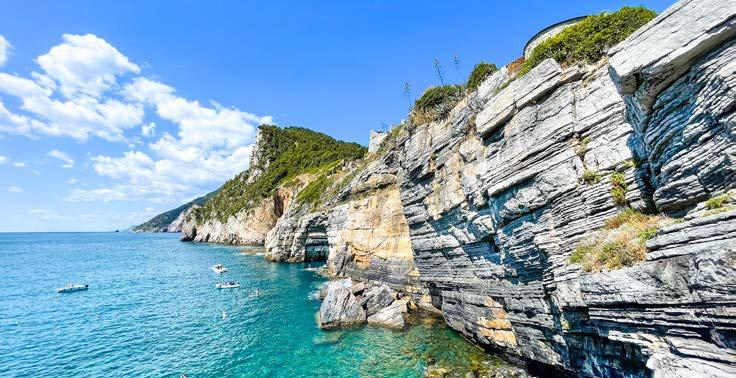
vicissitudini videro Portovenere appartenere a diverse bandiere fino all’epoca napoleonica, quando, era il 1812, venne realizzata, per volere dello stesso imperatore, la strada litoranea che collega il centro marinaro alla Spezia e denominata ancor oggi “la Napoleonica”. Di grande importanza storica è il 17 di agosto: la Festa della Madonna Bianca è anniversario di un miracolo certificato da un atto notarile in cui compaiono i nomi di più di sessanta popolani quali testimoni diretti dell'evento.

century onwards, throughout many vicissitudes, Portovenere belonged to different flags until in 1812, during the Napoleonic era, the coastal road connecting the seaside village to La Spezia was built, as per request of the emperor himself. Today, it is still called “la Napoleonica”.
An occasion of great historical importance is the Celebration of the Madonna Bianca (17th of August), the anniversary of a miracle that was recorded through a notary deed showing the names of the direct witnesses of this event, as more than sixty villagers were involved.
BIBLIOGRAFIA • BIBLIOGRAPHY
UBALDO FORMENTINI, Monumenti di Porto Venere, restauri 1929-1934, Memorie dell'Accademia Lunigianense di Scienze, La Spezia, 1934.
URSONE NOTAIO, Poema della vittoria, cura e traduzione di Roberto Centi, Fabbiani, La Spezia, 1993.
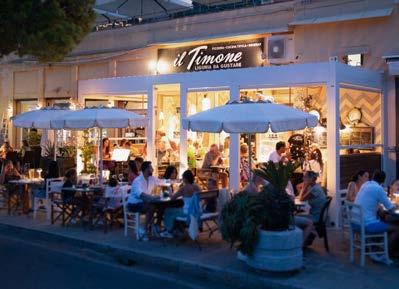


Timone, with its sea view, encompasses the typical culinary offer of the Ligurian region; this is why it can be defined neither as a restaurant nor a pizzeria, but as something that embraces baking and cooking.
Il Timone, con la sua vista mare, racchiude l’offerta gastronomica tipica del territorio ligure, per questo non può essere definito né ristorante né pizzeria, ma qualcosa che abbraccia forno e cucina.



ella Storia della Lunigiana i monasteri rappresentano un capitolo di grande importanza. Caratterizzata da una rete stradale che ha sempre avuto nei millenni un ruolo assolutamente strategico, questa terra preziosa, attraversata da un percorso peregrinale europeo come la Via Francigena, ha conosciuto un sistema capillare di ospitali costruiti da numerosi ordini monastici.
Così di Monterosso, che sul crinale ospita il più antico santuario mariano della Liguria, quello di Soviore, più che di castelli parleremo di un cenobio e precisamente del Convento dei Frati Cappuccini. Di fattura piuttosto recente (principio del XVII secolo) è una istituzione di grande significato nella storia del borgo marinaro.
Costruito sul ripido pendio di San Cristoforo, affacciato sul mare sottostante, la sua fondazione si deve a due frati cappuccini che qui vennero a predicare la Quaresima. Poiché riuscirono a pacificare le fazioni in lotta del paese, il popolo riconoscente decise di edificare un Convento per il loro Ordine. La struttura fu inaugurata nel 1622 e nell'anno successivo fu consacrata anche la chiesa in dedica a San Francesco d'Assisi. Cacciati più volte, prima da Napoleone, poi
n the History of Lunigiana monasteries represent an extremely important chapter. Characterised by a road network that has always had a strategic importance over the millennia and crossed by a European pilgrimage route, the Via Francigena, this precious land also included a capillary system of shelters built by numerous monastic orders. When talking about Monterosso, which is home to the oldest Marian sanctuary in Liguria, Soviore, located right on the ridge, we will focus on the Capuchin Friars Monastery rather than on the castles. It was built relatively recently (early 17th century), and it’s an institution of great significance in the history of the seaside village.
Located on the steep slope of San Cristoforo, overlooking the sea below, it was founded by two Capuchin friars who came here to preach Lent. Since they managed to reconcile the fighting factions of the village, the grateful inhabitants decided to build a Monastery for their Order. The building was inaugurated in 1622 and the church dedicated to St. Francis of Assisi was consecrated the following year. The Capuchin friars, who were sent away several times, first by Napoleon, then by the Italian secularist government, made their definitive return in 1895. The monastery was
anche dal governo laicista italiano, i cappuccini vi fecero definitivo ritorno nel 1895. Il monastero fu danneggiato dai bombardamenti dell'ultima guerra e infine restaurato. Nel 1962 chiesa e convento sono state impreziosite della statua magnifica del San Francesco e il lupo, opera dello scultore monzese Silvio Monfrini (1894-1969).
Inserita nella cornice di un panorama mozzafiato, proprio al termine della passeggiata panoramica che dal borgo antico di Monterosso sale al Convento, la figura del Patrono d’Italia è commovente per qualunque persona che sia dotata di un minimo di sensibilità: l’atteggiamento del lupo, che si avvicina con la testa al Santo, chino verso di lui con la mano aperta, è di quelli che toccano le corde dell’anima, perché richiama il naturale atteggiamento di un bambino che posa accanto alla figura del padre.
È la scena idilliaca del Mondo ideale in cui sarebbe troppo bello vivere, un vero capolavoro che, non a caso, vede salire per una foto migliaia e migliaia di turisti ogni anno, letteralmente ammaliati sia dal luogo, sia da quell’atmosfera intensissima tanto votata alla meditazione e alla preghiera.
damaged by the bombings during the last World War. It was eventually restored. In 1962, the church and the monastery were embellished with the magnificent statue of St. Francis and the wolf, by Silvio Monfrini, a sculptor from Monza (18941969). Framed by a breathtaking panorama and located right at the end of the panoramic walk that goes from the ancient village of Monterosso up to the Monastery, the figure of the Patron of Italy triggers an emotional reaction in any sensitive person: the image of the wolf stretching its head towards the Saint, who is leaning towards the animal with his open hand, touches the soul because it evokes the natural attitude of a child standing next to the father figure. It is the idyllic scene of an ideal World where life would be beyond beautiful, a true masterpiece that, unsurprisingly, attracts thousands and thousands of tourists every year. When coming up here to take their photos, tourists are literally spellbound both by the place and by the deeply intense atmosphere of meditation and prayer.

Dal 2009
Massimo e Daniela, insieme al loro staff, preparano ogni giorno, con passione, focacce liguri, pizze, torte salate, dolci sfiziosi come piccoli pandolci genovesi, baci di dama, biscotti al limone e molto altro ancora....
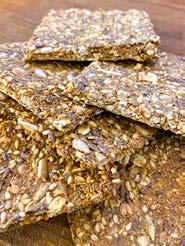


E very day, since 2009 Massimo, Daniela and their staff prepare food with passion, Ligurian focaccias, pizzas, savoury pies, yummy cakes such as Genoese pandolce, ladies kisses (baci di dama), lemon biscuits and much more.


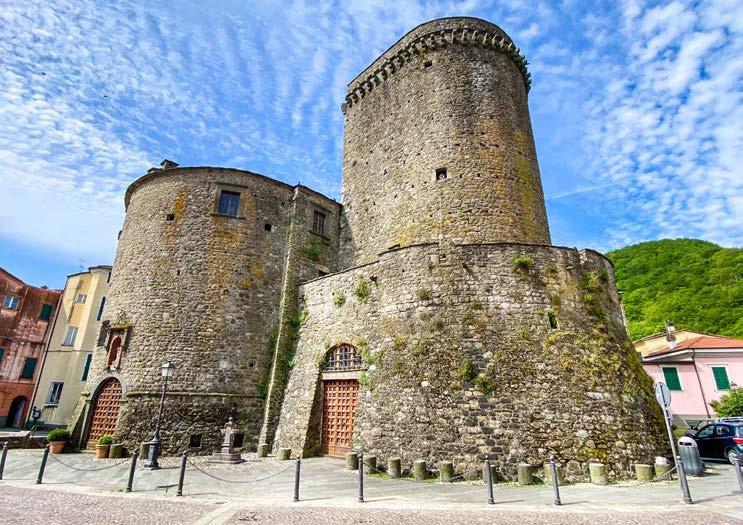
a nascita di un insediamento non è mai casuale e Varese Ligure deve la sua origine alla posizione strategica posta all'incrocio delle strade transappenniniche dirette verso Parma, in direzione Nord-Est, e verso Bobbio e il Genovesato, in direzione Ovest, sulla via di crinale. Probabilmente il borgo sorse su di un insediamento di epoca bizantina, poiché resti di quell’epoca sono stati rinvenuti negli scavi effettuati presso il castello dei Fieschi. Ad avvalorare questa ipotesi stanno alcuni toponimi di derivazione greca come il "Monte dei Greci" e il quartiere di Grecino; inoltre Giorgio Ciprio, antico

he origins of a settlement are never accidental. Varese Ligure owes its own origins to the strategic position at the intersection of the transapennine roads leading to Parma, to the North-East, and to Bobbio and Genova, to the West, following the ridge road. The village was probably built on a previous Byzantine settlement, since remains belonging to that era were found during the excavation works that were carried out in the area of the Fieschi castle. This hypothesis is supported by some toponyms of Greek origin such as “Mount of the Greeks” and the district of Grecino; furthermore, Gior-
geografo imperiale, ci attesta l’esistenza, nell’area di interesse lunigianese, tra il VI e il VII secolo, di quattro fortilizi posti a costituire il limes bizantino in Lunigiana, tra cui si annovera il Kastron Kampsas, identificato dagli studiosi nel sito di Campi, in alta Valle del Taro, sulla via del Monte Gottero.
Varese Ligure fu dominio della potentissima famiglia genovese dei Fieschi, schierata da parte guelfa. La loro presenza è documentata fin dall'inizio dell'XI secolo, quando ottennero l'investitura dall'imperatore Federico I il Barbarossa (1161). I Fieschi esercitarono una decisa supremazia su tutta l’Alta Val di Vara e, pur se tra alterne vicende,

gio Ciprio, an ancient geographer of the Empire, documented the existence in the area of Lunigiana, between the 6th and 7th century, of four fortifications that represented the Byzantine borders in Lunigiana. Among them, Ciprio mentioned the Kastron Kampsas, which was identified by scholars with Campi, located in the upper Taro Valley, on the road to Mount Gottero.
Varese Ligure was under the dominion of the powerful Genoese family of the Fieschi, who were Guelphs. Their presence has been documented since the beginning of the 11th century, when they were appointed by Emperor Frederick I Barbarossa (1161). The Fieschi exerted a strong au-

Varese Ligure
Dal 1947, una produzione limitata ed esclusiva, ideata, realizzata e venduta unicamente a Varese Ligure, in Piazza Vittorio Emanuele n° 58, sede della bottega.

Since 1947, exclusive and limited production, designed, made and sold only in Varese Ligure, in Piazza Vittorio Emanuele n° 58, where the shop has its premises. info@marenco1947.it cell. +39 338.6661159 www.marenco1947.it
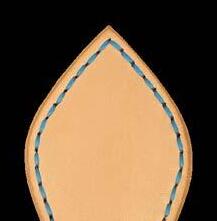


Loc. Perazza Varese Ligure (SP)
Tel. +39 0187 842108
coopcasearia.it info@coopcasearia.it
La Cooperativa
Casearia Val di Vara opera nella “Valle del Biologico”. Le antiche ricette di caseificazione sono state integrate con le moderne tecnologie alimentari. Tutti i prodotti sono senza coloranti o conservanti chimici.

The Cooperativa
Casearia Val di Vara is based in the “Valle del Biologico” (Organic Valley). The ancient recipes of cheese making have been integrated with modern food technologies. All products are free of colouring agents or chemical preservatives.





ne rappresentò la maggior storia fino al 1547, quando, in seguito al fallimento della congiura contro Andrea Doria, la casata crollò e i suoi domini furono incamerati dalla Repubblica di Genova. Nel 1797 il borgo fu sotto la dominazione francese con Napoleone Bonaparte, per poi essere inglobato nel 1815 nel Regno di Sardegna. Nel 1862 assunse l'odierna denominazione di Varese Ligure e con l'istituzione nel 1923 della provincia della Spezia, fu inglobato in questa amministrazione provinciale.

thority over the entire Upper Vara Valley and, among many vicissitudes, they represented the greatest part of its history until 1547, when, following the unsuccessful conspiracy against Andrea Doria, the House collapsed and its properties were confiscated by the Republic of Genoa. In 1797, the village was under the French dominion with Napoleon Bonaparte. Later, in 1815, it was incorporated into the Kingdom of Sardinia. In 1862, it received its current name of Varese Ligure and in 1923, with the establishment of the province of La Spezia, it was incorporated into this provincial administration.


a città di Massa è indistinguibile dalla sua fortezza, uno dei più grandi complessi fortilizi di tutta la Toscana. Il Castello Cybo-Malaspina, assoluto dominatore della città dall’alto del colle roccioso sotto cui essa si raccoglie, è scrigno di una storia che affonda le radici nel dominio lunigianese della stirpe obertenga (sec. X).
La prima indicazione certa dell’esistenza del fortilizio la si trova in un diploma imperiale del 1164 con sigillo di Federico il Barbarossa, documento in cui si indica Obizzo Malaspina, detto il Grande, nel ruolo di Signore del castello.
Fra i tanti potenti, Massa annovera anche Castruccio Castracani, al quale si deve nel 1315 la realizzazione del mastio, il nucleo più antico rimasto del castello. In epoca umanistica, nel 1441, divenne Signore di Massa il marchese di Fosdinovo, Antonio Alberico Malaspina. Nel 1553, con il matrimonio di Ricciarda Malaspina e il nobile genovese Lorenzo Cybo, dal 1553 si apre la dinastia dei Malaspina-Cybo con il
assa is inextricably linked to its fortress, one of the largest ones in Tuscany. The Cybo-Malaspina Castle, which majestically dominates Massa from the top of the rocky hill above the city itself, is the very symbol of a story that began with the Obertenghi’s supremacy in Lunigiana (10th century). The first clear evidence of the existence of the fortress was featured in the imperial discharge papers sealed by Frederick Barbarossa in 1164; in this document, Obizzo Malaspina, known as the Great, was appointed as Lord of the castle. Among the many powerful personalities, Massa is linked to Castruccio Castracani, who, in 1315, was responsible for the construction of the keep, the oldest surviving part of the castle. During Humanism, in 1441, the Marquis of Fosdinovo, Antonio Alberico Malaspina, became Lord of Massa. In 1553, the year of the marriage between Ricciarda Malaspina and the Genoese nobleman Lorenzo Cybo, the Malaspina-Cybo dynasty began with the Marquis Alberico. He reshaped the City of
marchese Alberico. Con lui si attua la fondazione rinascimentale della Città di Massa secondo un preciso canone architettonico sapienziale. La città che noi oggi conosciamo ha avuto in passato diversi appellativi onde distinguersi dalle altre città omonime. Inizialmente fu nota come ‘Massa Lunense’, essendo prossima all’antica città di Luni; poi fu detta ‘Massa del Marchese’ dal titolo dei suoi signori Malaspina; quindi fu Massa Cyba’, dal nome dei successori dei Malaspina, e infine ‘Massa Ducale’ con l’annessione al ducato di Modena, quando per unire la Padania al mare viene realizzato lo straordinario percorso attraverso le Alpi Apuane della Via Vandelli.
Dopo anni di restauri, tutto il complesso della fortezza di Massa è oggi aperto al pubblico.
BIBLIOGRAFIA • BIBLIOGRAPHY
Massa according to the Renaissance style and following precise, sapient architectural standards. The city that we know today has taken on several names throughout the different eras so as to distinguish itself from other cities with the same name. Initially, it was known as‘ Massa Lunense ’, due to its proximity to the ancient town of Luni; then, it was called ‘Massa del Marchese’, using the title of its lords, the Malaspina; after that, the name was changed to ‘Massa Cyba ’, like the successors of the Malaspina; finally, it became ‘Massa Ducale’, following the annexation to the duchy of Modena, when the extraordinary route called Via Vandelli was built to overcome the Apuan Alps and connect Padania to the sea. After years of restoration works, the entire structure of the fortress of Massa is now open to the public.
CLAUDIO PALANDRANI, Alberico e Massa: la città e il giardino. Una lettura in chiave ermetica dell'urbanistica e delle imprese di un Principe del tardo Rinascimento, Ed. A. Ricciardi, Massa, 2004
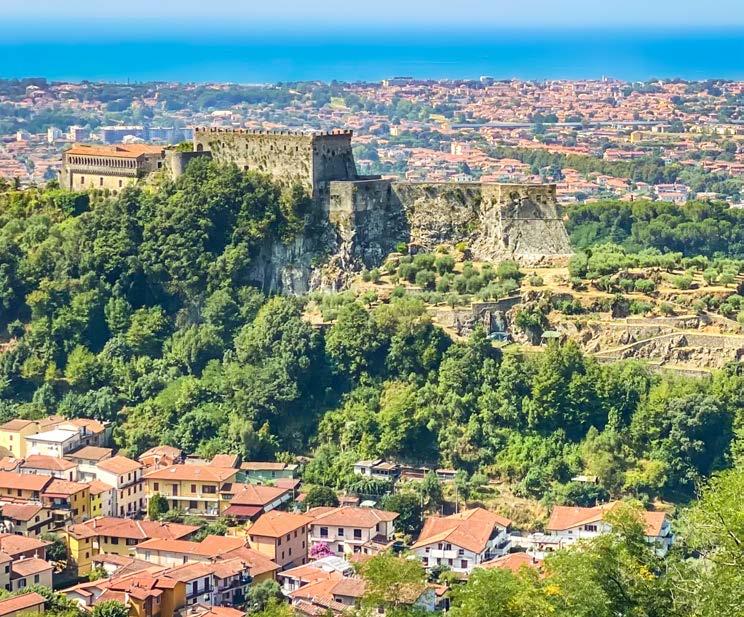

lesposedirosy.it - info@lesposedirosy.it



Con oltre 60 anni di passione
Le Spose di Rosy conduce gli sposi verso i primi passi

ABITI DA sposa e sposo wedding dresses


del loro sogno d’amore... Una boutique di abiti da sposa e sposo, cerimonia uomo e donna, damigelle, paggetti e accessori.


With over 60 years of passion and dedication, Le Spose di Rosy accompanies the bride and groom through the first steps of their dream of love... A boutique for bride and groom dresses, formal dresses for men and women, bridesmaids, pageboys and accessories.





a più antica menzione del Castellum
Agynulfi (o Aghinolfi), toponimo di chiara origine longobarda, è datata al 752. Anche se considerata da molti una semplice congettura, appare probabile che uno dei quattro castra citati da Giorgio Ciprio quali componenti del Limes bizantino in Lunigiana (tra cui il celebre Kastron Soreon, l’attuale Filattiera), sia proprio quello indicato nella Descriptio orbis romani come Castrum Euorias quale equivalente di un "castrum Versiliae". L’importanza di questa linea fortificata lunigianese è enorme: già in epoca della Roma Repubblicana il Senato aveva fatto divieto ai generali di superare con il proprio esercito in armi la linea Rubicone-Magra senza la propria approvazione preventiva, tanto che ha fatto storia il famoso passo di Giulio Cesare che muove contro Roma aprendo le porte alla fondazione dell’Impero. Su quella linea ideale, che sanciva il limite ultimo entro il quale si aveva ancora il tempo di organizzare la difesa dell’Urbe, nacque agli albori del V secolo, con il generale Onorio, poi anch’egli imperatore, il Limes difensivo contro le invasioni barbariche. Tale linea di fortificazioni fu poi rafforzata dal successivo, già citato, Limes bizantino, il quale fu eretto dall’Esarcato per fronteggiare l’invasione longobarda. Al

he oldest mention of Castellum Agynulfi ( or Aghinolfi), a toponym of clear Lombard origin, dates back to 752. Although considered by many a mere conjecture, it seems likely that one of the four castra mentioned by Giorgio Ciprio as part of the Byzantine Limes in Lunigiana (including the famous Kastron Soreon, today’s Filattiera), coincides with that indicated in the Descriptio orbis romani as Castrum Euorias as equivalent of a castrum Versiliae. The importance of this fortified line in Lunigiana is enormous: in the Republican Rome era the Senate had already forbidden the generals and their army to cross the Rubicon-Magra line without a prior approval; the famous feat of Julius Caesar, carried out against the orders of the Senate, marked indeed a historical event that led to the foundation of the Empire. On that ideal line, which established the ultimate limit within which there was still time to organise the defense of the city, the defensive Limes against barbaric invasions was established at the dawn of the 5th century, under General Honorius, who would later become emperor. This line of fortifications was then reinforced with the subsequent Byzantine Limes, as already mentioned, which was built by the Exarchate to face the Lombard invasion. At the time
tempo Ravenna era la Capitale dell’Impero Bizantino in terra italica e a capo della Republica Maritima Italorum era posta la nostra gloriosa città romana di Luni. Due grandi retaggi di quell’epoca profonda sono presenti ancora nell’epoca contemporanea. Si tratta del Dipartimento Militare Marittimo dell’Alto Tirreno, il cui comando in capo è costituito presso l’Ammiragliato della Spezia, e della tristemente famosa Linea Gotica, il cui comando sul fronte tirrenico fu costituito dall’esercito tedesco - che intendeva fermare la salita dell'esercito di liberazione anglo-americano da Sud - presso il Monastero del Corvo a Bocca di Magra (Ameglia). La Linea Gotica si chiudeva a Carrara, non lontano da Montignoso, che è il limite meridionale del comprensorio della Lunigiana Storica.
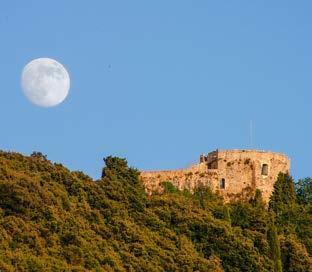
Ravenna was the capital of the Byzantine Empire on Italic territory and our glorious Roman town of Luni was in command of the Republica Maritima Italorum. Two great legacies of that remote era have survived to our days. One of them is the Maritime Military Department of the Upper Tyrrhenian Sea, which has its headquarters at the Ammiragliato (Admiralty) of La Spezia, while the other one is the sadly famous Gothic Line, which was controlled on the Tyrrhenian front by the German army and was intended to stop the arrival of the Anglo-American liberation army from the South - at the Corvo Monastery in Bocca di Magra (Ameglia). The Gothic Line ended in Carrara, not far from Montignoso, which is the southern limit of the Lunigiana Storica (Historical Lunigiana) district.
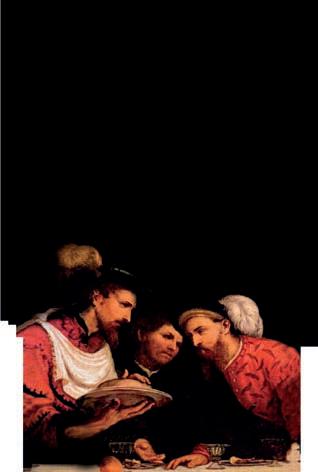
Una storia di famiglia lunga cinque generazioni, La Bottega di Adò è un salumificio artigianale, specializzato nella lavorazione della carne di suino. Da alcuni anni è presente sul mercato con pancetta e guanciale stagionati in conca di marmo, com'è tradizione per il lardo di Colonnata.

A family history spanning five generations, La Bottega di Adò is an artisan sausage factory, specialising in the production of pork. It has been on the market for some time with bacon and cheek lard aged in a marble basin, as in the tradition of the Colonnata lard.
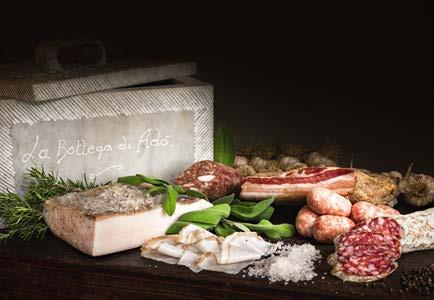
Via Nerino Garbuio snc Montignoso (MS)
Tel. +39 0585/348315 www.labottegadiado.com
